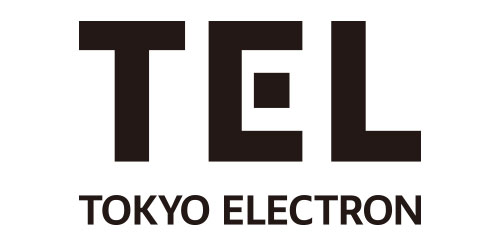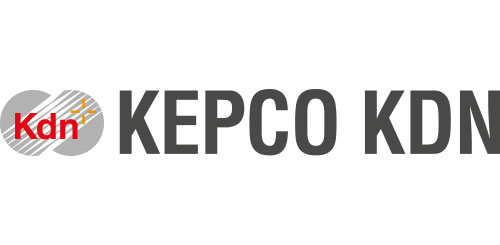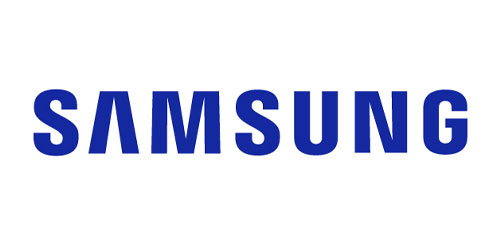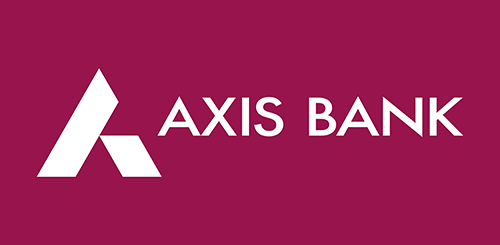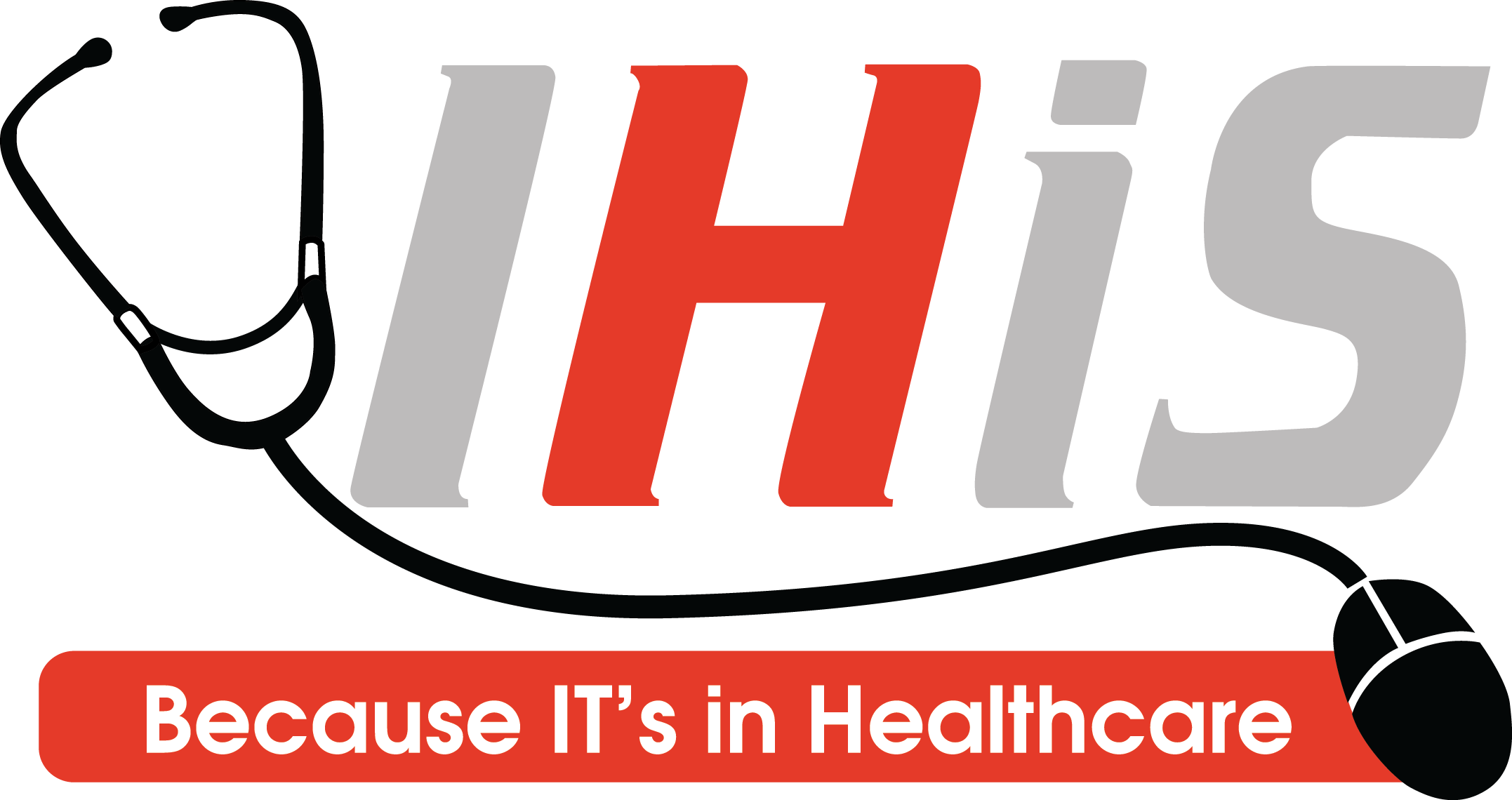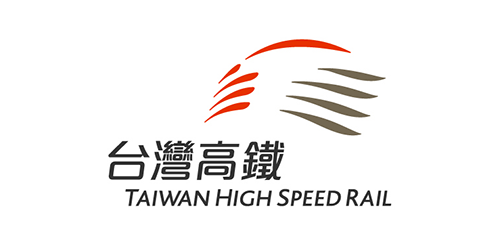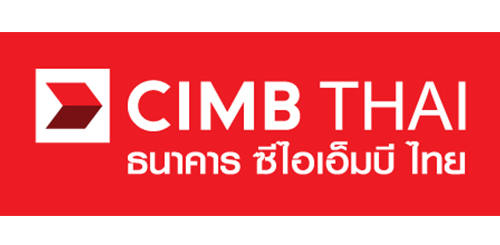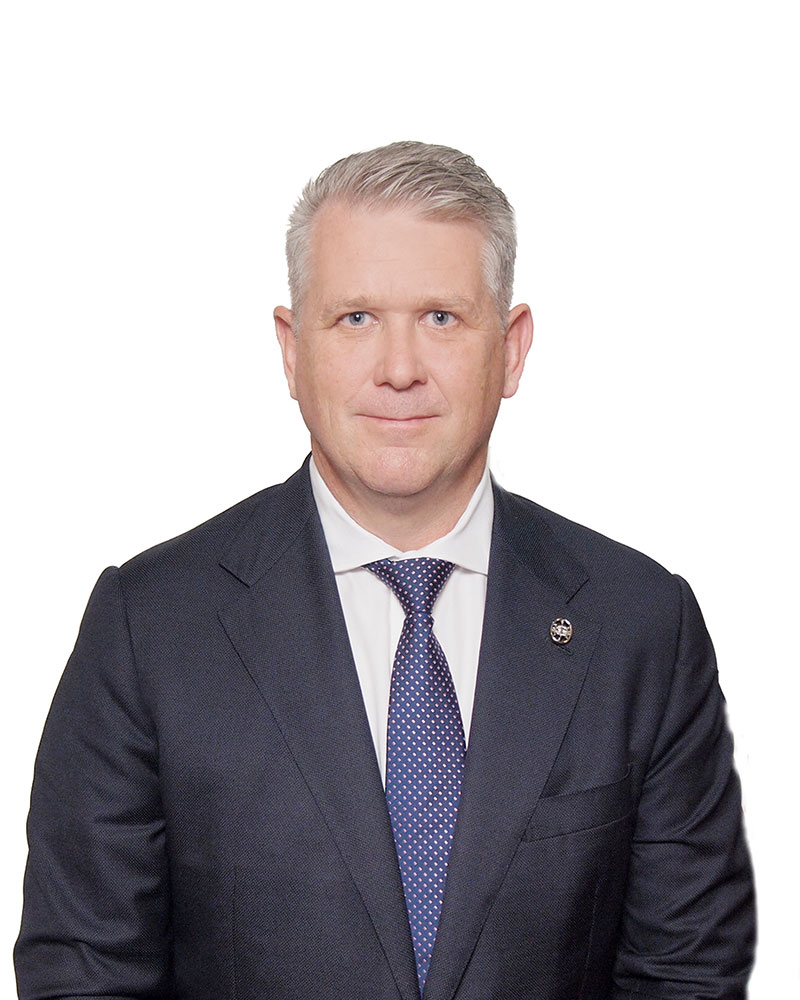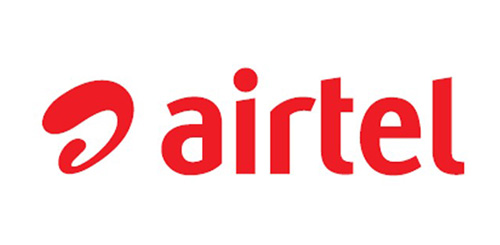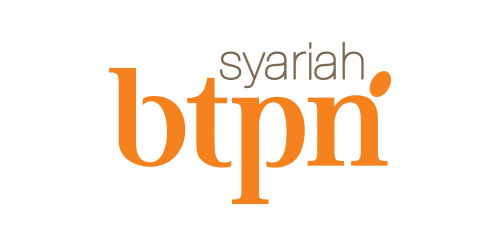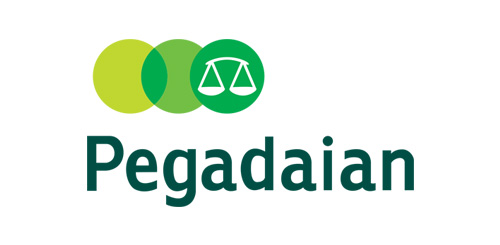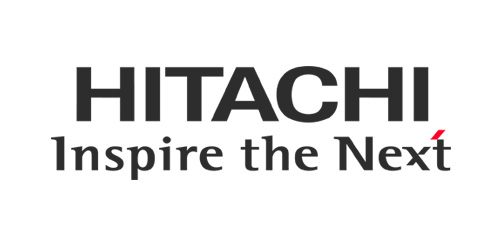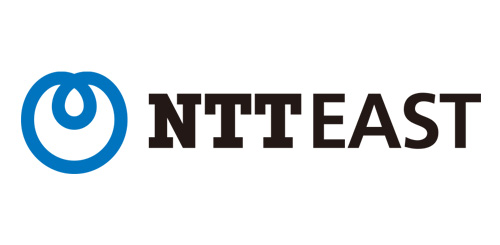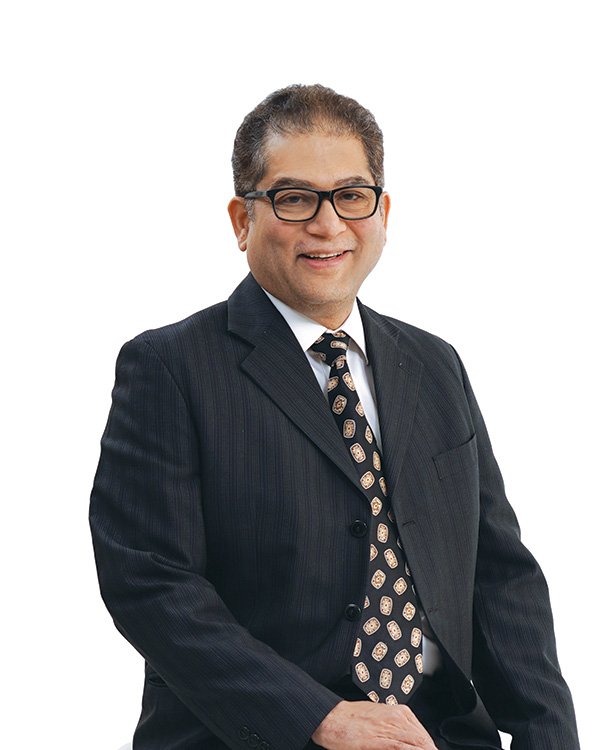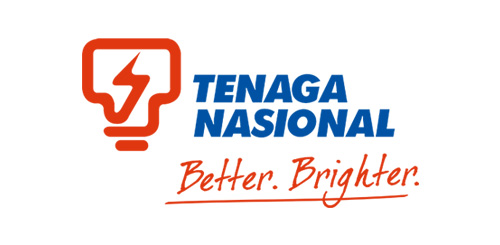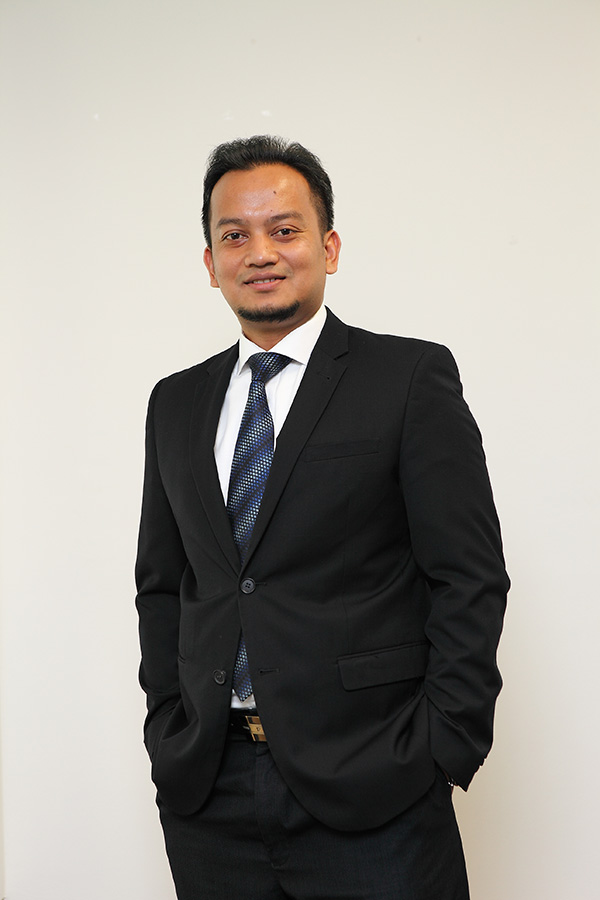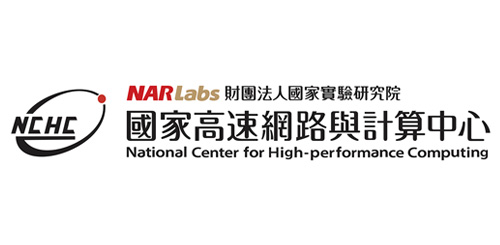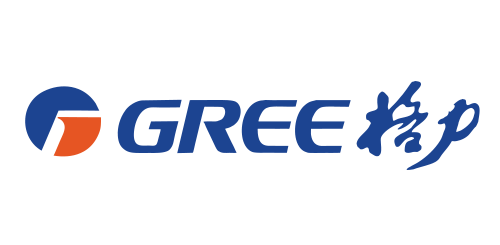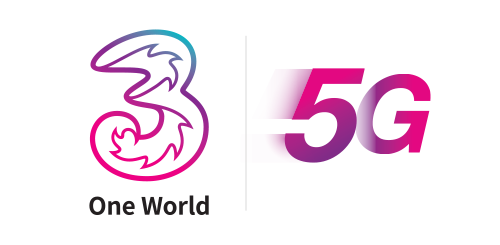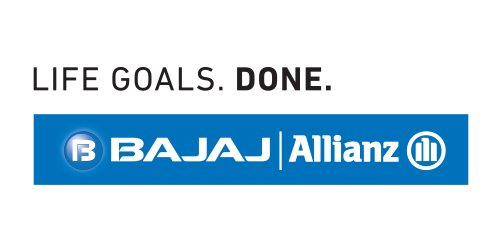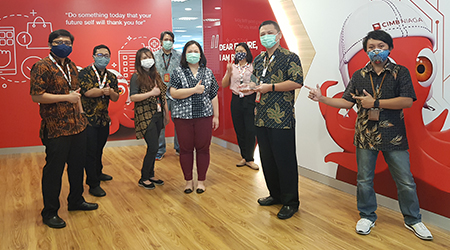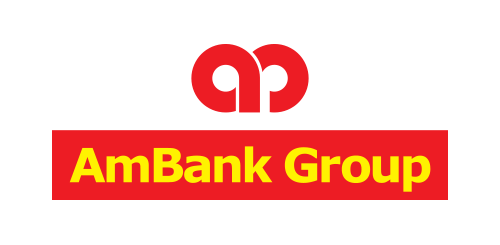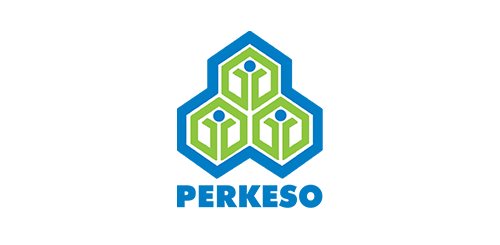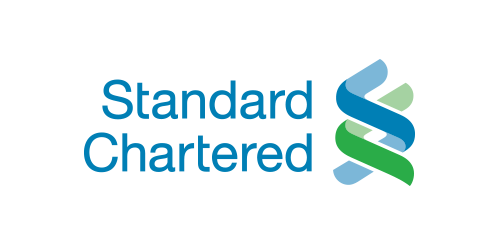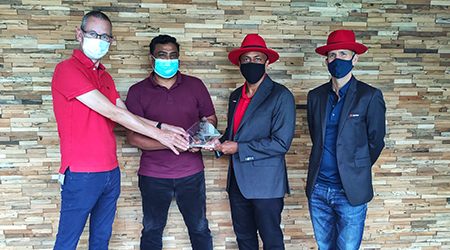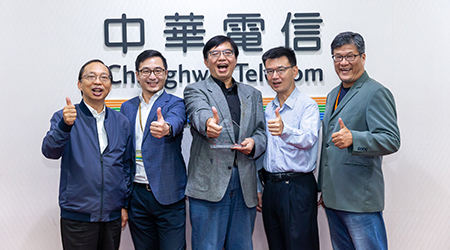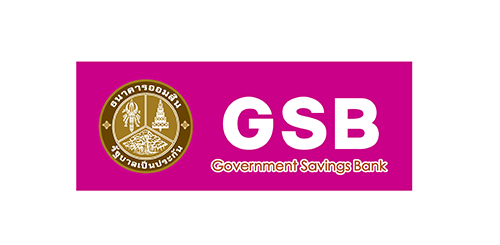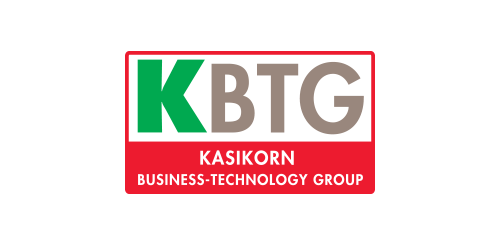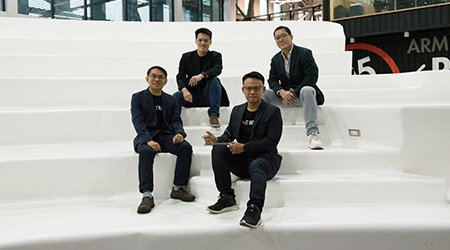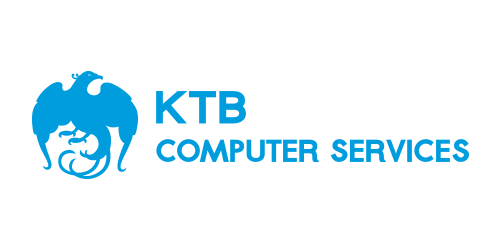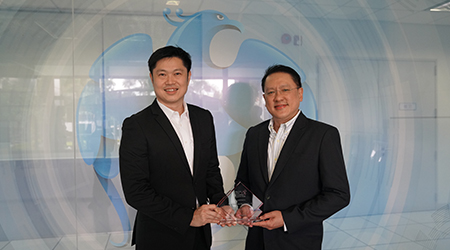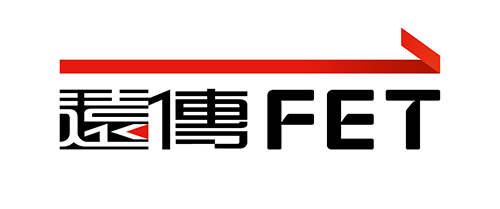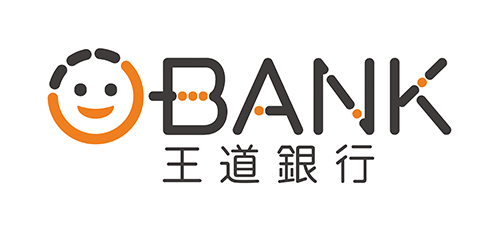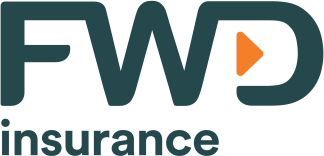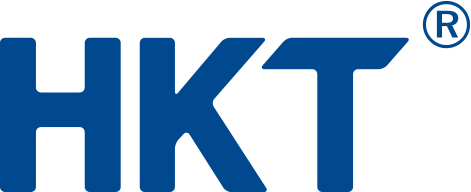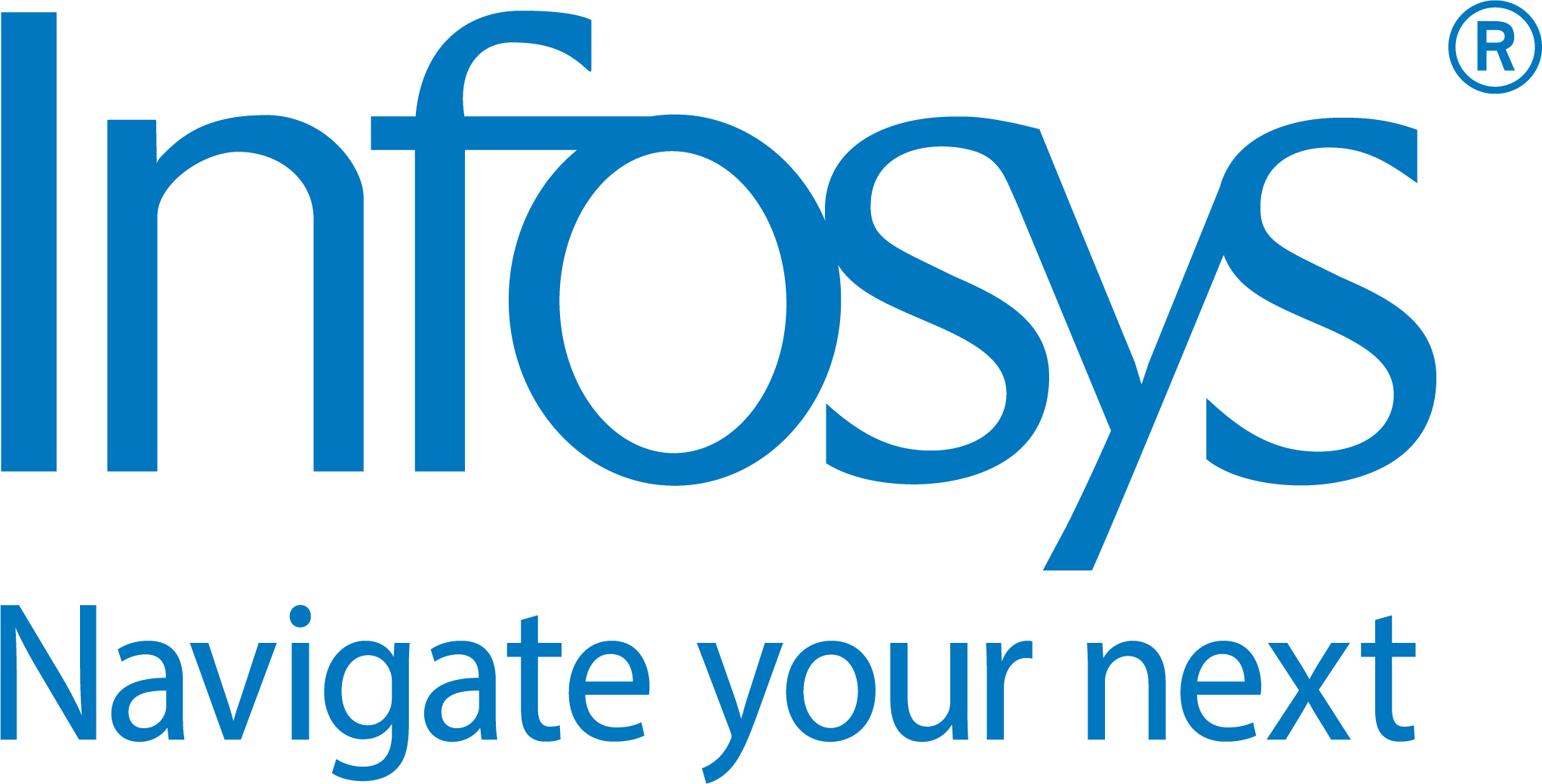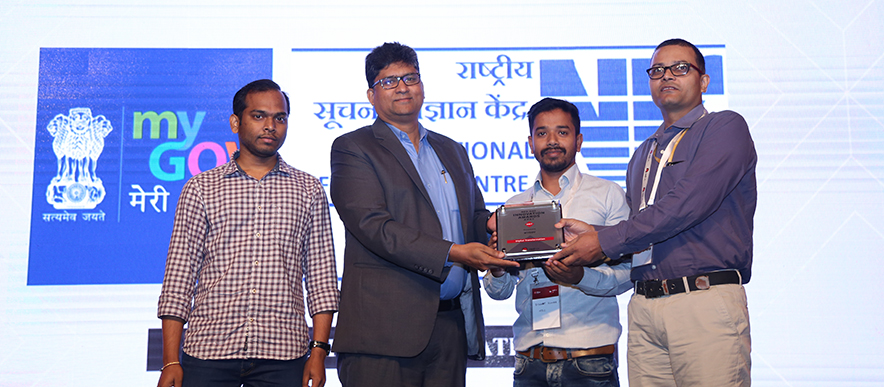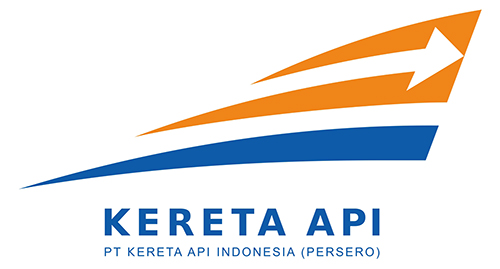Indonesia
Gudang Garam Group
Digital Transformation
Cloud-Native Development
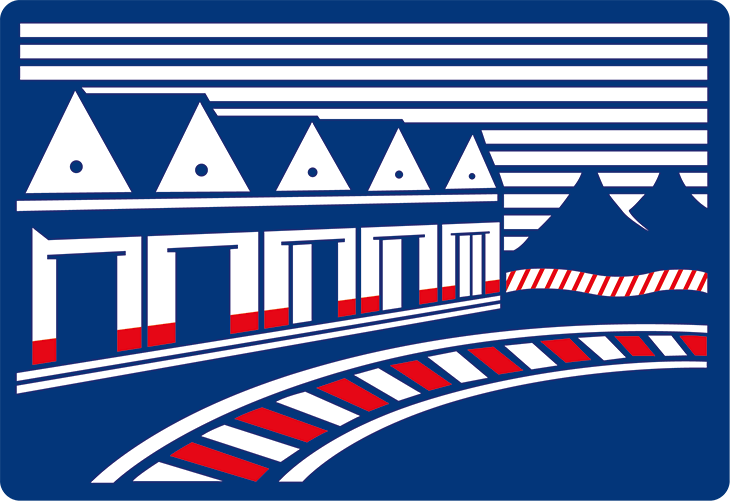
Gudang Garam is a leading producer of kretek cigarettes in Indonesia, engaged in cigarette manufacturing, marketing and distribution. In the pursuit of modernizing its applications, the organization worked with Red Hat to revolutionize its infrastructure. With a robust, reliable and well-supported platform in mind, Gudang Garam decided to deploy Red Hat OpenShift, the leading hybrid cloud application platform.
Prior to adopting OpenShift, the cumbersome task of building applications from source for each deployment across various environments consumed significant time and effort. The strategic decision to go with Red Hat OpenShift helped to streamline the process, liberating developers to focus on innovation rather than repetitive tasks. The collaborative environment fostered by OpenShift also strengthened the bond between development and infrastructure teams, facilitating seamless coordination and accelerated time-to-market for new features and enhancements.
The adoption of OpenShift catalyzed a shift in Gudang Garam to drive agility, flexibility, productivity and efficiency in application development in order to supporting business needs, facilitating seamless coordination and accelerated time-to-market. This strategic choice laid the foundation for digital transformative change, enhancing application development processes, resilience, operational efficiency, and developer productivity that propelling us towards sustained growth and competitiveness in respective industries.
Bank Negara Indonesia
Digital Transformation
Hybrid Cloud Infrastructure
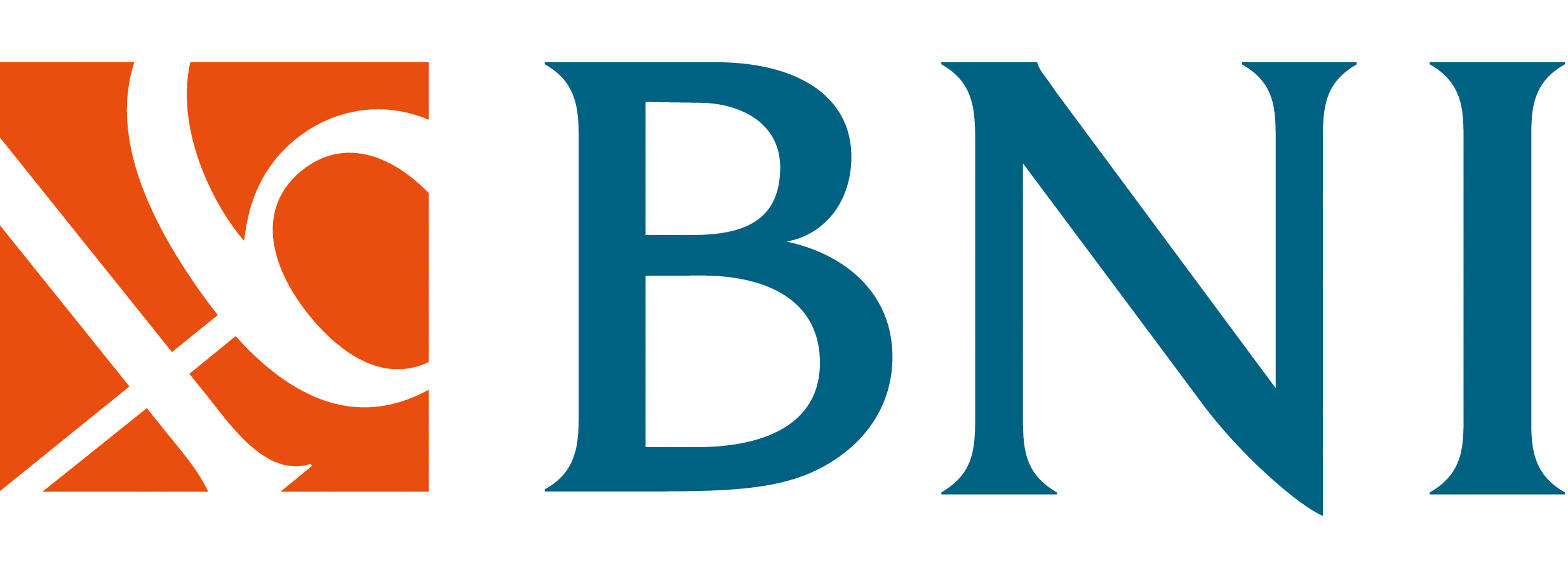
Bank Negara Indonesia (BNI) is a government-owned bank looking to gain a competitive edge in the industry through digitization of products, business processes and controlled operating costs. With the rise of digital-first lifestyles, customers are seeking mobile banking solutions that are more intuitive, faster, and feature-rich. As the organization strives to meet the evolving needs of its customers, BNI called on Red Hat's expertise to integrate modern technologies into its customer-centric banking solutions to enhance their experience, such as advanced security features, artificial intelligence-based customer support and better real-time transaction capabilities.
BNI is working with Red Hat to ensure a viable architectural design to create a state-of-the-art mobile banking application that will attract new customers, especially the tech-savvy Millennial and Generation Z generations. Red Hat Consulting and its ecosystem of partners also support BNI in launching this application in Indonesia to transform the current way of working.
Having worked with Red Hat before, we are confident that they can help us achieve what we envision. Red Hat's enterprise-class support and extensive partner ecosystem provide us with the resources and expertise needed to effectively implement solutions like OpenShift. This allows higher transaction processing speeds and volumes as the system is better equipped to handle increased workloads without compromising performance, scaling up to 7,000 concurrent users at a time. Red Hat has helped us fulfill our commitment to reach more users and make banking services more accessible to a wider community, including those in remote or underserved areas.
ANZ
National Australia Bank (NAB)
Digital Transformation
Automation
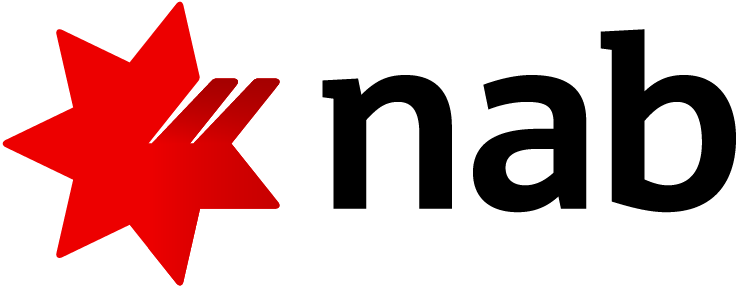
National Australia Bank (NAB) is one of the largest financial institutions in Australia that provides a comprehensive range of banking services to individuals, businesses, and institutions. It was through the need for improved reporting and streamlined operations and systems, as well as significant resource constraints, that NAB realized the need to transform its IT operations through automation. Their journey with Red Hat evolved through several key phases such as platform security, Linux patching, and disaster recovery automation. Now, NAB is fully optimizing operations after having successfully onboarded multiple teams, including Database, Digital Forensics and Cyber Security.
The investment in the Red Hat Enterprise Linux operating system and Red Hat Ansible Automation Platform allowed NAB to address resource constraints by efficiently managing an extensive inventory of thousands of devices without increasing headcount and compromising performance. The integration of diverse systems also enabled NAB to consolidate various systems and processes into a unified automation framework, improving efficiency and quality of services, benefiting both customers and employees by providing fast and more reliable banking services. These contributed to millions of cost savings annually and positioned NAB as a front-runner in the ANZ financial services industry.
NAB has leveraged Red Hat Ansible Automation Platform to simplify our environment through automation, allowing us to reduce manual operational tasks and improving our compliance and security remediation timeframes. We started working with Red Hat in 2018, drawn to the opportunity to adopt automation practices in-house with their support. Ansible has delivered with the flexibility and power we needed to enhance overall efficiency.
Spark New Zealand Limited
Hybrid Cloud Infrastructure
Automation
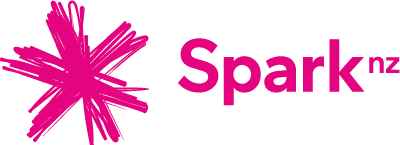
With 24 regional business hubs, 61 retail hubs stores, more than 5,000 employees, and over 22MW of data centre capacity built, Spark New Zealand Limited is New Zealand’s largest telecommunications and digital services provider. Their services range from mobile, broadband, entertainment, and cloud services, to high-tech solutions such as AI, IoT and 5G. As a long-time consumer of Red Hat products, including Red Hat Enterprise Linux, Red Hat OpenStack Platform and Red Hat OpenShift, Spark wanted to use these solutions in a more sophisticated and centralized manner, delivering a platform for the future of 5G and beyond while servicing the needs of existing generations of network functions.
As lifecycle updates for technology stack become more frequent and rapid, Spark was committed to providing consistency for operations while ensuring customization for complex workloads. Working with Red Hat enabled Spark to achieve faster, more coordinated, and reliable deployments, improving operational costs and efficiency. Apart from pulling forward in project timelines, Red Hat solutions also improved security and compliance while modernizing applications, reducing risk in cost of outages and brand damage for both Spark and customers reliant on critical communication services.
The team embarked on this project with one aim – to automate everything without compromises and create a platform of the future. As a longtime customer of Red Hat, we wanted to continue this partnership by taking it to another level: to challenge the way technology is used to bring more benefits to our customers. Thank you to the Red Hat team for working with us on this project.
SA Power NetworksDigital Transformation
Automation

SA Power Networks is South Australia’s sole electricity distributor, providing electricity to 99% of the State’s population – more than 1.7 million customers. Increasing operational and project delivery demands have driven the business to look at new and innovative ways to streamline repetitive tasks and reduce after-hours patching work. SA Power Networks' bespoke cloud configuration tool was adding unnecessary complexity to processes for infrastructure builds and deployment, and a lack of automation and standard tooling was preventing improved ways of working across the IT department. To address this, the team decided to build a new set of capabilities to scale IT operations and improve cost savings.
Working with longtime Red Hat partner Advent One, SA Power Networks deployed the Red Hat Ansible Automation Platform to build, configure, and orchestrate patching its Linux and Windows environments. Additionally, SA Power Networks is trialing Microsoft Azure Red Hat OpenShift to increase container management capabilities for new projects. As a result, saving 100 hours per month on repetitive tasks, highlighting the significance and time savings that can be achieved by automating operational tasks. In addition to that, there are positive flow-ons across the IT department as SA Power Networks can now standardize infrastructure and delivery builds, reducing its manual patching input. This has removed human error and increased traceability.
SA Power Networks is playing a key role in helping South Australia reach its goal of net-100% renewable energy by 2030 and zero emissions by 2050. Continuing to provide dependable services and keeping systems secure is therefore pivotal to SA Power Networks and for everyone living in South Australia.
A key goal of this project was freeing up our people’s time to work on what truly mattered, and automation became a clear solution that would have organization-wide benefit. Using open-source solutions, as opposed to bespoke or proprietary solutions, has also encouraged a culture of open sharing among our teams. Thanks to Advent One and Red Hat, we’re thrilled to have extracted more benefits than we envisaged from this project.
ANZ
Australia and New Zealand Banking Group Limited
(Australia)
Digital Transformation
Hybrid Cloud
Infrastructure

Australia and New Zealand Banking Group Limited is
one of the four largest banks in Australia, and the
number one bank in New Zealand, serving over 8.5
million retail and business customers, operating in
more than 30 markets including Australia, New
Zealand, Pacific Region, Asia, UK, Europe and North
America.
As ANZ Bank set out to improve the financial well
being and sustainability of customers through its
portfolio of services, tools, and insights, it
recognized very early on the importance of investing
in digital to modernize workloads and differentiate
itself from competitors. With their current
implementation of Red Hat OpenShift 3.11 approaching
end of life, the bank worked with their account team
and Red Hat Consulting to develop a roadmap that
would enable them to migrate their existing
applications to Red Hat OpenShift 4, while
minimizing risk and avoiding any major
disruption.
To do this, ANZ Bank used
Red Hat Service Interconnect, a solution that enables agile, portable and
secure communication across environments. The
solution helped the bank to more securely connect
applications across environments, enabling developer
teams to move them as they were ready, without
needing elevated privileges or dependencies on
network operations. This resulted in a streamlined
migration and improved developer experience, as well
as maintaining uninterrupted transactions for the
bank’s retail and commercial customers. Digitalizing
these workflows has reduced the amount of
engineering resources required to complete the
project.
Shifting IT architectures can be a very complex and lengthy process, especially when you take into consideration the costs and risks involved. Migrating our OpenShift applications presented similar challenges. The Red Hat team worked closely with us to evolve and help bring Red Hat Service Interconnect to market and enable us to take advantage of the agility and scalability that it offers. This has allowed us to not only increase the productivity of our developers but also retain a high level of customer satisfaction. With the success we’ve seen on the initiative, we can rightly say that our decision to go digital-first in investments has been the right one in these economic times.
ING Bank Limited (Australia)
Automation
Hybrid Cloud Infrastructure

ING changed the way Australians bank more than 22
years ago by launching the country’s first
branchless bank. ING now offers Australians home
loans, transactional banking, superannuation, credit
cards, personal lending, insurance, and wholesale
banking services. Today, ING is Australia’s most
recommended bank[1] and fifth largest main financial
institution[2]. It’s also Canstar’s Bank of the Year
and has been since 2020.
As a longtime Red Hat customer, ING has used Red Hat
solutions to improve automation, drive efficiency
and accelerate cloud adoption. Working with Red Hat
has allowed ING to accelerate the adoption of a
microservices based architecture. ING’s technology
department was further faced with the task of
integration and operations of traditional and modern
cloud based workloads across the bank’s existing
ecosystems. Leveraging Red Hat OpenShift and
Red Hat Ansible Automation Platform
has supported ING in uplifting its capability that
will assist the bank in the adoption of a more
efficient hybrid cloud operating environment to
drive innovation and address complexity.
It’s an honor to receive this award from Red Hat. This recognition is a testament to ING’s incredibly diligent technology team who are always focused on simplifying the technology environment and pursuing operational excellence, in order to continually enhance customer and employee experience. Thank you to Red Hat for assisting us in doing this.
Southern Cross Health Society (New Zealand)
Cloud-Native Development
Digital Transformation

Southern Cross Health Society opened for business in
1961, introducing health insurance to New Zealanders
and establishing itself as one of New Zealand’s most
trusted brands. Southern Cross was established
because its founders believed New Zealanders should
have ongoing access to private healthcare options.
Over the years, Southern Cross has expanded its
community of care and now helps more New Zealanders
than ever to look after their health and wellbeing,
travel plans, and pets.
One of the organization’s main objectives was to
move away from manual processes and monolithic
platforms to provide customers with a better digital
experience through online services and mobile
applications. They also provide services to their
healthcare partners, so centralized integration
capabilities are crucial for this purpose.
To enable this, Southern Cross used a managed
service for
Microsoft Azure Red Hat OpenShift (ARO), unlocking access to a modern, microservices
platform that enables essential services such as API
management and streaming. The fully managed service
gave Southern Cross the flexibility and scalability
to grow with demand, without having to pump in extra
investments or manpower to manage the platform. ARO
has also provided huge cost savings for Southern
Cross, boosting productivity and reducing the time
to market. This has allowed healthcare partners and
insurance clients a much-improved experience in
handling their insurance policies as most of these
processes are now automated.
As a healthcare provider, it is important to us to provide exceptional customer experience not only in the healthcare services we deliver but also how they communicate with us. For us, delivering digital services is important to enable this. Migrating to the Azure Red Hat OpenShift has greatly revolutionized the way we work, allowing us to innovate faster and add new features and services. This has helped fulfill our commitment to provide the best customer experience as well as offer centralized integration capabilities to our healthcare partners.
China
BMW Brilliance Automotive Ltd.
Digital Transformation
Resilience

Established in May 2003, a joint venture between the BMW Group and Brilliance China Automotive Holdings Ltd.,
BMW Brilliance Automotive Ltd. (BBA) oversees the research and development, procurement, production, sales,
and after-sales services of BMW automobiles in China. BBA is dedicated to providing sustainable premium personal
travel services and leads in promoting sustainability across the entire value chain in the Chinese automotive industry.
BBA operates a cutting-edge production facility in Shenyang, with additional offices in Beijing and Shanghai.
They also have a subsidiary, LingYue Digital Information Technology Co., Ltd., with offices in Beijing and Nanjing.
The company employs nearly 26,000 people and collaborates with around 430 local suppliers, maintaining its position
as the largest taxpayer in Shenyang for 17 consecutive years.
As a global and domestic leader in digital transformation, BBA takes the lead in the industry by leveraging
Red Hat OpenShift to decouple
its industrial control systems. This achievement involves successfully containerizing traditional industrial
control logic and deploying it onto standard PC servers. Not only does this significantly reduce future costs
related to the construction and management of industrial control systems, but it also unifies the technology
stacks in the fields of operational technology (OT), industrial internet of things (IIOT), and industrial information
technology (IT). This streamlines the integration of data, providing the essential foundation for realizing
next-generation industrial digital technologies such as extensive predictive maintenance, Digital Twin, and distributed
Manufacturing Execution Systems (MES).
China Southern Asset Management Co., Ltd.
Digital Transformation
Cloud-Native Development

Southern Asset Management Co., Ltd. (Southern Asset Management) is one of China’s first domestic asset
management companies that was approved by the China Securities Regulatory Commission.
Through sustained and stable investment performance and comprehensive professional client services,
Southern Asset Management has gained recognition and trust from a wide range of fund investors, social security councils,
and pension and institutional clients – maintaining its place at the forefront of the industry.
As one of the top players in the industry, Southern Asset Management recognizes that digital
and intelligent transformation is an industry trend, and building an in-house information-rich,
intelligent asset management system is one of the core elements essential for supporting and ensuring
the rapid growth of the business. Leveraging Red Hat's open-source application ecosystem,
Southern Asset Management has acquired various software resources, including
Red Hat OpenShift,
transition from Infrastructure as a Service (IaaS) to Platform as a Service (PaaS).
This transition allows the company's developers to focus on business functionality development
without the need to address hardware, network, and related hardware and software issues.
Additionally, it significantly increased application development efficiency, reduced system maintenance complexity,
and enhanced system fault recovery capabilities, providing robust support for the company's in-house construction
of a digital/intelligent asset management system.
Chint Anneng Digital Power (Zhejiang) Co., Ltd.
Digital Transformation
Hybrid Cloud Infrastructure

Guided by the two major national strategies of "2060 Carbon Neutrality" and "Rural Revitalization,"
Chint Anneng actively explores emerging markets and focuses on providing comprehensive solutions for cooperative development,
sales, surveying and design, installation, and after-sales operation and maintenance of rooftop photovoltaic systems for
rural users. As a household photovoltaic industry company, Chint Anneng has accumulated over 1 million users,
with a market share of over 30% in the market.
With the rapid growth in demand for household photovoltaics, there is a pressing need to enhance
Chint Anneng’s digital capabilities in marketing, services, operations, and asset management.
The organization then initiated the Chint Anneng Next-Generation Business Operations Platform project to
create agile and efficient service capabilities to adapt to rapid business growth and respond swiftly to
industry demands – with the goal of expanding globally. It became imperative to adopt a hybrid multi-cloud approach,
and collaborating with Red Hat enabled Chint Anneng to facilitate open collaboration between its developers and various
cloud vendors, leading the way for innovative development in the photovoltaic sector.
Morgan Stanley Management Service (Shanghai) Limited Automation

Morgan Stanley has over 80,000 employees worldwide, primarily engaged in investment banking, securities,
wealth management, and investment management. Established for 88 years, the company has offices in over
42 countries and regions globally. In May 2023, Morgan Stanley received approval from the China Securities
Regulatory Commission to establish Morgan Stanley Futures (China) Co., Ltd., becoming one of the first international
financial services companies to set up a wholly-owned futures company domestically. In July 2023,
Morgan Stanley International Bank (China) Limited received regulatory approval to commence its general category derivative product trading business.
While continuously expanding its range of financial services and products, Morgan Stanley has decided to implement
enterprise-level infrastructure management to achieve digital transformation and maintain exceptional service standards.
Leveraging Red Hat Ansible Automation Platform,
Morgan Stanley has established a comprehensive set of automated operations solutions to address the challenges related to the rapid expansion
of infrastructure resources and the limited availability of human resources in IT resource management.
India
Infosys Limited
Automation
Resilience

Infosys is a global leader in next-generation digital
services and consulting. Over 300,000 of its people work to amplify human potential and create the next opportunity
for people, businesses, and communities. The company enables clients in more than 56 countries to navigate their digital
transformation. With over four decades of experience in managing the systems and workings of global enterprises, it
expertly steers clients, as they navigate their digital transformation powered by cloud and AI. It enables them with an
AI-first core, empowers the business with agile digital at scale and drives continuous improvement with always-on learning
through the transfer of digital skills, expertise, and ideas from Infosys’ innovation ecosystem. Infosys is deeply committed
to being a well-governed, environmentally sustainable organization where diverse talent thrives in an inclusive workplace.
Infosys wanted to move away from legacy automation tools to provide a risk-free environment for their
internal projects and clients. Infosys collaborated with Red Hat to achieve automation at scale with
Ansible playbooks. The company also wanted to develop an
end-to-end automation solution to help address security vulnerabilities by adhering to security standards, best practices,
and IT service management (ITSM) requirements. This collaboration enabled the implementation of over 60 automated workflows
and reduced the process of legacy patching by nine days.
With expertise in next-gen digital services, Infosys is empowering businesses to accelerate their cloud transformation journey and realize business value. We believe it is critical to prioritize a secure environment to ensure our customers can use our digital services with peace of mind, without being exposed to cyber risks. Through this strategic collaboration with Red Hat, we will continue to help our clients achieve automation at scale, accelerate growth and innovation.
Jio Platforms Limited
Digital Transformation
Hybrid Cloud Infrastructure

Jio Platforms Limited is the digital arm of Reliance Industries and is responsible for digital transformation
across Reliance Industries, India’s largest and most profitable private sector company. Having established a
market positioning in several sectors in India, such as retail, oil, petrochemicals, and digital services,
Reliance Jio Infocomm Limited, a subsidiary of Jio Platforms Limited has built a world-class all-IP
data-strong future-proof network using 4G LTE and 5G technologies. Jio Platforms is powering the 5G
rollout of Reliance Jio with its indigenous 5G stack. It offers an end-to-end 5G solution consisting of 5G Radios,
a complete 5G Core Network, AI/ML ATOM platform for 4G/5G, MANO for cloud CNF orchestration,
ACI for cloud infrastructure deployment as well as the Cloud-native OSS/BSS Platforms.
The exponential growth of data has forced telecommunication companies worldwide to accelerate
their digital transformation journeys. To thrive in a hypercompetitive and price-sensitive market
like India, Jio Platforms had to shift from its vertical cloud silo approach to a multi-hybrid cloud platform.
JPL has deployed its Cloud Native 5G/4G Combo Core for millions of subscribers and massive user plane
capacity in the Jio network. To meet the challenges of scalability, reliability, and interoperability,
the base operating system used by these solutions is
Red Hat Enterprise Linux (RHEL).
RHEL
facilitates efficient workload migration, provides consistent management, visibility,
and security capabilities from development to production, for public, private, hybrid, and multi-cloud infrastructure.
It provides the cross-infrastructure consistency, workload portability, and streamlined operations needed to move
traditional and containerized workloads from the datacenter to edge locations.
Jio has disrupted the digital services landscape in India with its modernized, no–legacy, digitally evolved, data & AI-driven platform and infrastructure. Jio is pleased to be able to tap into the ecosystem support that Red Hat offers and to create an edge by leveraging its solutions and deliver a superior network experience for every consumer, home, and enterprise in India and the world.
STELLANTIS
Digital Transformation
Cloud-Native Development

Stellantis is one of the world’s leading automakers with a constellation of 14 iconic automotive brands globally.
In India, Stallantis has invested over €1 billion since 2015 to develop a sustainable footprint in the country and
grow its brands. India is a major sourcing hub for vehicles, components, and mobility technologies and hosts
the heart of Stellantis ICT while strongly contributing to global software development. With a team strength of
700+ empowered employees, aligned across the business, IT functions, software, and CoEs in Chennai, Bengaluru,
and Hyderabad, Stellantis Digital Hubs in India drive continuous digital innovation and encourage software enhancement
to create customer delight, operational excellence, and competitive advantage.
Stellantis needed to transform its IT infrastructure to increase operational continuity,
decrease downtime in its production process and eliminate as much of the error-prone human interaction in
the release process as possible. The company also needed to create environments that are easily portable and
apply a continuous integration (CI) and continuous deployment (CD) methodology to infrastructure.
The implementation of Red Hat OpenShift Service on AWS
enabled Stellantis to integrate multiple IT systems and help developers collaborate within and across projects,
resulting in flexibility and faster development of apps. Stellantis will also benefit from the platform's automated
scalability capability to optimize costs by scaling the additional compute capacity in the cluster as and when load increases on the application.
Stellantis has been at the forefront of leading digitisation across the auto value chain globally and in India.
With Red Hat, it has been a great journey and fruitful collaboration to drive the uptake of integrated digitisation
and offer a smarter, customer-centric future.
Adopting the managed service offering provided by Red Hat made a big difference for Stellantis.
The expertise and support of a trusted partner have helped Stellantis maintain its IT infrastructure and
ensure operational continuity for some of the business-critical applications and interfaces.
This helped Stellantis focus on its core business and what it does best, while Red Hat handled
the operational aspects of the platform.
IndusInd Bank Ltd.
Digital Transformation
Cloud-Native Development

IndusInd Bank has designed the Enterprise Payment Hub with the help of
Red Hat OpenShift Container Platform,
a scalable and robust centralized payment system, thereby helping IndusInd Bank in offering seamless customer service further
enhancing its customer experience.
The Digital Transformation category recognizes organizations that have successfully made the transition into
a truly digital enterprise, overcoming and addressing business challenges with digitalization.
The Automation category celebrates organizations that have effectively harnessed automation to transform their
organizational processes, workflows, and tasks.
The Hybrid Cloud Infrastructure category showcases organizations that have demonstrated creative and
collaborative use of public, private, and open cloud deployments.
The Cloud-Native Development category highlights organizations that have effectively used agile methodologies
to speed up the innovation and development of successful business applications that have made an impact on customers.
The Resilience category shines a spotlight on organizations that have successfully overcome business challenges
and disruption, continuing to exceed business goals and customer expectations with open source.
This award is a testimony of our effort in transforming IndusInd Bank into a state-of-the-art digital bank. We have enhanced the bank’s market positioning with a faster and more reliable payment ecosystem using Red Hat’s enterprise open source technology.
Indonesia
PT. Bank Rakyat Indonesia (Persero), Tbk. (BRI)
Cloud-Native Development
Digital Transformation

As the oldest and largest state-owned bank in the country, Bank Rakyat Indonesia (BRI) is currently
one of the largest Indonesian companies in terms of market capitalization. Traditionally focused on
providing banking services for micro, small, and medium enterprises, BRI wanted to generate new revenue
streams via retail banking and had to adapt to the shifting demands of consumers that were increasingly
digital-minded. To attract a younger demographic, BRI launched its BRI mobile banking app (BRImo) in 2019.
However, this version of BRImo was unable to be scaled up to keep pace with customer demands.
To provide fast, efficient, safe and easy-to-access financial services to capture this group of
potential customers, BRI turned to Red Hat to modernize its enterprise applications and optimize the BRImo app. The use of
Red Hat OpenShift Container Platform has allowed BRI to improve the scalability,
agility, and responsiveness of BRImo, leading to higher customer satisfaction and retention. These upgrades
have led to a 68% YoY user growth for BRImo in 2022.
Red Hat’s cutting-edge technologies greatly empowered BRI to drive new growth engines and capture the millennial segment of customers through digital initiatives, which have always been ranked high on our stakeholders’ priorities. Our BRI applications running on Red Hat OpenShift Platform have improved agility in terms of scaling the workload and enhanced user experiences with new features that can be released timely and more often. This has accelerated our capabilities to deploy new versions of the application to respond to customer preferences in UI/UX experience, building our brand reputation as a reliable financial institution.
PT. Bank OCBC NISP, Tbk
Automation
Cloud-Native Development

Bank OCBC NISP has adopted Red Hat OpenShift and
Red Hat Ansible Automation Platform.
Red Hat OpenShift and
Ansible Automation
are helping increase developer productivity and to help launch products and services on the ONe Mobile application more quickly and scalably.
In addition, using Red Hat OpenShift, together with
Ansible Automation means Bank OCBC NISP’s IT teams
can automate repetitive tasks, freeing up time to focus on more high-value activities, which can increase
efficiency and productivity. This collaboration helps improve the customer experience for ONe Mobile customers,
namely the mobile banking application for Bank OCBC NISP individual customers.
The ONe Mobile application, which was launched in 2018, is a mobile banking application that helps
Bank OCBC NISP's individual customers to grow and manage their finances. As of June 2023, the number
of ONe Mobile transactions has increased by 63% and the transaction value has increased by 67% YoY.
This shows good acceptance from customers of ONe Mobile's features that can support their financial needs,
both for their wealth management and for daily transactions (daily banking).
As digital transformation accelerates, we realize that Banks must also adopt digitalization – therefore, Bank OCBC NISP adopts agile methods and undergoes technological infrastructure modernization. This is done so that the Bank can continue to compete, collaborate, and be ready for the future. This acknowledgement from Red Hat is a testament to Bank OCBC NISP’s commitment to foster innovation in our products and services, so as to provide a comprehensive experience for our customers.
Taiwan
KGI Securities Digital Transformation

KGI Securities, a wholly owned subsidiary of China Development Financial (CDF), is a market leader in a broad range of areas,
including wealth management, brokerage, proprietary trading, underwriting, fixed income and a variety of derivatives products.
KGI Securities provides clients with a full range of financial products for investment as well as wealth management services
and assistance with fundraising in domestic and foreign capital markets.
To enhance business agility and strengthen KGI Securities’ competitive advantage in the financial sector,
KGI Securities deployed modern technologies and architectures allowing its core systems to support digitized
business processes and decision-making. By adopting Red Hat OpenShift , KGI Securities streamlined processes,
automated operations and adopted agile development practices. This successfully reduced system downtime while
enhancing its performance and significantly improved user experience, leading to increased user satisfaction.
Adopting Red Hat OpenShift technologies has resulted in enhanced digital services, streamlined processes, and user-friendly interfaces. These efforts have contributed to providing customers with more innovative products and solutions, creating excellent end-to-end user experiences. The project has also equipped employees with modern tools to work more efficiently and effectively, fostering a culture of innovation within the organization.
National Taiwan University Hospital, (NTUH)
Digital Transformation
Cloud-Native Development

Founded in 1895, the National Taiwan University Hospital (NTUH) has nurtured countless professionals in medicine.
It is renowned for the clinical care it offers and is highly trusted by the people of Taiwan.
NTUH currently employs over 6,700 staff, with a capacity of around 2,600 beds, and serves over 8,000 outpatients on a daily basis.
Hospital business processes require privacy protection and prevention of external attacks and internal misuse when interacting with external systems,
which help prevent unauthorized access and data breaches. The growth and changes in hospital operations also necessitated a solution
that would allow NTUH to quickly respond to business growth and changes.
Working with Red Hat has allowed NTUH to monitor and integrate applications, emphasizing security and privacy protection,
and to have flexible scalability to meet the business needs of its hospitals. Red Hat solutions enhanced NTUH’s efficiency,
reduced risks and facilitated business growth and adaptation.
NTUH has always developed its primary medical systems in-house, with minimal utilization of open source solutions as part of its infrastructure. Consequently, we have limited familiarity with open source solutions. Working with Red Hat has enabled us to embrace open source solutions while carrying on with NTUH’s tradition of providing high-quality and top-notch medical services. Red Hat has offered us a new platform choice to plan for digital transformation, and we expect that this will enable us to undertake a comprehensive overhaul of our system architecture, ensuring a more innovative and modern infrastructure that can meet the evolving needs of people.
Thailand
TMBThanachart Bank Public Company Limited (TTB) Cloud-Native Development
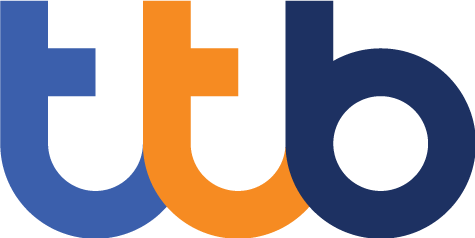
TMBThanachart Bank Public Company Limited (ttb) is a result of a merger between TMB Bank Public Company Limited (TMB)
and Thanachart Bank Public Company Limited (Thanachart) in 2021. ttb aims to improve the financial well-being and
deliver a great financial experience for customers by combining the unique strengths of both organizations.
Post-merger, it was critical for ttb to integrate all IT assets and systems to better serve TMB and
Thanachart customers. The bank wanted to leverage technology that could further support its digital banking strategy.
Red Hat OpenShift Container Platform
supported ttb in providing a reliable digital platform for a stronger customer experience.
OpenShift has also helped speed up the development and enhancements to the bank’s consumer-facing applications.
In addition, ttb built a new internet banking platform, Business One, for corporate and SME customers, supported by OpenShift .
In doing so, ttb offered a world-class digital solution and platform to support business customers and provide greater choice.
The bank’s innovation efforts and use of enterprise open source also contributed to strong growth in the volume of
digital transactions.
TTB is driving the bank forward through greater possibilities offered with digital solutions, for example through the concept of Humanized Digital Banking. Or, digital banking that is friendly, familiar, and easy to use to support every need. We aim to provide an experience with better service to the bank's customers, and to be leaders in creating a better financial life for people of Thailand, today and in the future. Winning the 2023 Red Hat APAC Innovation Awards reinforces another level of success for the company. The Bank is committed to continuously developing applications in order to deliver a great banking experience - one further example of success I’m pleased to share is that there are currently more than 4.8 million customers using the Bank's ttb touch service.
ANZ
Tambla Workforce Solutions
Digital Transformation
Automation

Tambla provides intelligent workforce solutions to
organizations with large “shift-based” essential
workforces. They work with enterprise companies and
government organizations across a range of sectors –
to provide industry leading, intelligent HR
technology solutions that help to optimize the
management and payment of their essential workers.
One of Tambla’s key solutions is the processing of
payroll for hundreds of thousands of health workers
each pay period.
Tambla inherited an aging platform through a
business acquisition that was slow and in need of
improvement. To deliver performance optimization
across these data processing-intensive payroll
services, Tambla turned to Advent One, a Red Hat
Premier Partner, who designed and quickly deployed a
solution based on
Red Hat Enterprise Linux,
A lot of our customers, including government organizations, operate in highly controlled work environments where processing the payroll on time is critical to the business and cannot be compromised. Migrating our systems to a modern enterprise platform with automation and management from Red Hat has revolutionized how we work and allowed us to focus on the delivery of critical services our customers rely on to run their businesses. With Red Hat’s technology and Advent One’s support, we now have access to far more storage and compute resources that deliver higher performance at a fraction of the cost of the previous systems.
Suncorp Group
Digital Transformation
Hybrid Cloud
Infrastructure

Suncorp is one of Australia's largest financial
services companies offering a diverse portfolio of
insurance and banking products and services through
some of Australia and New Zealand's most recognized
financial brands. Through the adoption of Red Hat
open source technologies, Suncorp is able to respond
to the changing business needs faster.
Suncorp
prioritized the delivery of digital-first and
personalized experiences for its customers as part
of its strategic effort to modernize their
enterprise technologies and drive further business
growth. To create these new customer experiences,
Suncorp needed a reliable multi-cloud development
platform that could enable their developers to build
new applications quickly and sustainably at a low
cost. For doing this, Suncorp implemented
Red Hat OpenShift Service on AWS (ROSA)
and
Azure Red Hat OpenShift (ARO)
to build an integrated development platform that
allowed developers to build secure and scalable
applications quickly while complying to financial
security standards.
At Suncorp, we have been progressively modernizing our technology environment, leveraging cloud services, to take advantage of the agility, scale and pace of delivery it offers. Digital-first has been a key priority for Suncorp’s technology strategy as we deliver more personalized experiences to meet the needs of digitally savvy customers. Red Hat OpenShift enables Suncorp’s developers the ability to deliver software more rapidly, in a secure and standardized environment, that is highly portable giving us flexibility in the future.
China
China Mobile Group Guangdong Co., Ltd.Automation
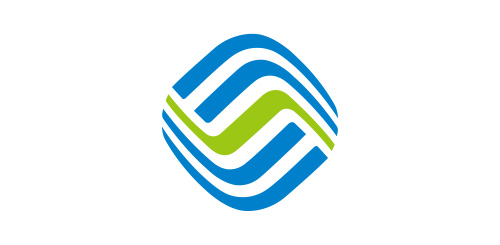
China Mobile Group Guangdong Co., Ltd., is a
professional subsidiary of China Mobile
Communications Corporation, a leading
telecommunications services provider in China. It
provides mobile voice and data services, wired
broadband and other information and communication
services to more than 100 million users in
Guangdong, China. Its operating income ranks first
among all communication companies in China.
To enhance their cloud business, China Mobile Group
Guangdong hopes to adjust and protect cloud
infrastructure more quickly through automated
operation and maintenance. With the help of
Red Hat Consulting, the telecommunications company aimed to reduce
the complexity of their applications and
environments, meet demanding customer SLAs and free
up resources for business innovation. To overcome
these challenges, it used
The telecommunications industry has rapidly evolved, particularly in the last two years. Red Hat’s solutions have helped us keep up with the needs of our customers by providing a reliable open-source platform that automates and tracks mobile network information better, faster, and more efficiently. We are now better equipped to meet and exceed customer expectations in the fast-paced telecommunications market.
Hisense Group Holdings Co., Ltd.Hybrid Cloud Infrastructure
Cloud-Native Development
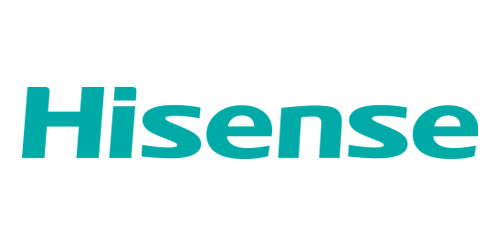
Hisense Group Holdings Co. (Hisense) business spans
a wide range of fields, including multimedia, home
appliances, intelligent IT information systems and
modern services which includes smart transportation,
precision medicine and optical communication.
Hisense initiated a PaaS cloud project to better
support the business platform and industrial cloud
deployment and selected
Red Hat OpenShift
for the implementation.
After adopting
Red Hat OpenShift, Hisense reduced the time spent manually setting
up the environment from 3 days to 1 hour, greatly
shortened the system construction cycle, increased
resource utilization by more than 60%, and
ultimately reduced the overall cost and
significantly improved IT agility.
Red Hat Consulting
services also helped the team ensure that the
project implementation followed the correct process
in the system architecture design to meet quality
and schedule requirements.
With increased agility and efficiency, reduced costs
and faster project delivery, the platform has made a
positive impact on Hisense’s various business units
and departments. Application development and
operation and maintenance (O&M) departments have
fully realized the advantages of PaaS over
traditional virtualization and IaaS, such as
improved resource utilization, dynamic scaling
capability of PaaS, and rapid deployment of DevOps,
promoting more departments to use PaaS.
Scientific and technological innovation is the crux of Hisense. The Platform-as-a-Service capabilities we have built with Red Hat’s open source solutions allowed us to fully utilize resources and manage both internal and external systems better. By being able to save costs and speed up application delivery times, we were able to transform our operations enterprise-wide. We are now better positioned to continue delivering exceptional technological products and stay ahead of the innovation curve.
Industrial Securities Co., Ltd.Digital Transformation
Hybrid Cloud Infrastructure

China Industrial Securities Co., Ltd., (Industrial
Securities) is a national, comprehensive and
innovative national securities company approved by
China Securities Regulatory Commission, and mainly
offers services such as securities brokerage,
underwriting and sponsorship, investment consulting,
securities operation, financial advisory, and
financing and securities financing. The group has
always attached great importance to the development
of fintech, and has placed fintech and digital
intelligence transformation at the strategic height
of the group.
To promote the holistic construction of "Digital and
Intelligence thriving Industrial Securities" and
build a cloud-native system in different domains and
layers, Industrial Securities built a comprehensive
solution which includes Platform-as-a-Service (PaaS)
runtime capabilities, microservices implementation
and services with
Red Hat OpenShift. OpenShift gives the company access to a
comprehensive Kubernetes solution with enterprise
support. Also, Industrial Securities is working with
Red Hat Consulting
to transform and undertake future operational and
technical tasks of the container platform.
Furthermore, they are using
Red Hat Training
to help IT teams quickly upgrade their skills.
The deployment successfully increased the company’s
speed of innovation. The new platform has reduced
30% of compute resources usage via containerization,
allowing the company to slash their total cost of
ownership. Industrial Securities can also handle
change management and business oriented development
more seamlessly by reducing the application
development cycle by 70%, from 5 days to 2 days. In
addition, IT teams can also provide infrastructure
services much more quickly via the cloud, being able
to extend core systems in 15 minutes instead of two
days.
Red Hat has helped us cope with serious technical challenges, providing a powerful and flexible platform to help us improve the service architecture. The platform will further consolidate our 'digital infrastructure' base, power societe generale securities in the next few years, increase the number of intelligent and digital transformations, boost group two-wheel drive speed and the integration of high quality development.
SAIC Volkswagen Automotive Co., Ltd.Digital Transformation
Hybrid Cloud Infrastructure
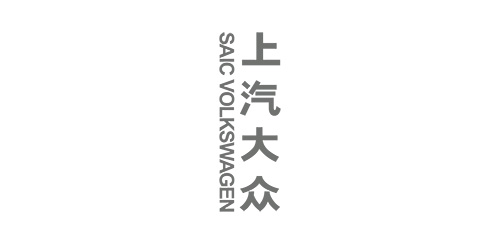
SAIC Volkswagen Automotive Co., Ltd., (SAIC
Volkswagen) is a Sino-German joint venture founded
by SAIC Motor and Volkswagen Group in October 1984.
The company is one of the earliest automobile joint
ventures in China.
To stay ahead of the automotive market, SAIC
Volkswagen aims to lead in the emerging field of the
Internet of Vehicles (IoV), networks of vehicles
equipped with sensors and software that can connect
and exchange data with each other using the Internet
of Things (IoT). The company wanted to build a major
platform for implementing IoV and IoT and chose a
containerization deployment mode, which can support
evolving smart connected vehicles and host
in-vehicle traffic portals in the long term.
SAIC Volkswagen chose
Red Hat OpenShift
and
Red Hat Enterprise Linux
to build this platform, in collaboration with
Red Hat Consulting. Red Hat’s open source technologies helped the
company avoid lock-in with closed source licensed
products while offering enterprise-level support
capabilities to help solve problems quickly and
support the reliability of production environments.
Red Hat OpenShift
is also able to support hybrid cloud architecture,
which can be adapted to different use cases across
multiple infrastructures.
SAIC Volkswagen is now well positioned to invest
more in business innovation and use the cloud to
deliver faster infrastructure services and achieve
greater business agility. Through the
OpenShift-based PaaS platform, the platform team can
more quickly provide the infrastructure and services
needed by the business development team, giving them
more time to focus on smart vehicles and systems
innovation. The platform’s hybrid cloud architecture
also means that business services can be more
quickly and flexibly scaled based on traffic. At the
same time, the business can be deployed to different
cloud infrastructures according to the requirements
of different scenarios, helping the business to
respond quickly to changing market trends.
The Digital Transformation category recognizes
organizations that have successfully addressed IT
challenges and delivered business value to
effectively compete as a digital enterprise. The
Automation category highlights projects that most
successfully automated processes, workflows, tasks
and IT operations to rapidly implement innovative,
disruptive technologies and practices. The Hybrid
Cloud Infrastructure category showcases a
collaborative public, private or open hybrid cloud
deployment, and the Cloud-Native Development
category showcases agile methodologies and
organizations that have most successfully
illustrated superior overall performance in
creating, maintaining and deploying successful
business applications.
The automotive industry is seeing major technology shifts. With the development of smart vehicles and intelligent vehicles, vehicles are becoming computers with wheels, and manufacturers are also transforming to technology companies. Red Hat empowers our company to adopt open source software and open source culture that can help us accelerate innovation and become innovative leaders in the Internet of Vehicles space.
Australia
ANZ Bank
Digital Transformation
Cloud-native Development

ANZ is a multinational banking and financial
services company with a purpose of helping to shape
a world in which people and communities thrive. To
achieve that goal, the digital customer self-service
tribe needed to ensure that ANZ’s internet banking
platform is always stable, reliable, and able to
meet the needs of its wide range of customers
including everyday consumers and small businesses
right up to large enterprises.
ANZ’s
internet banking platform uses a core banking
application which since 2005 was heavily customized
to its needs but has passed its end of life date and
has been on extended support for more than 12 years.
To future-proof the reliability and effectiveness of
its internet banking platform, ANZ decided to adopt
a containerized platform to remain architecturally
aligned with the core banking platform upgrade
path.
With the help of
Red Hat Consulting, ANZ deployed
Red Hat OpenShift,
Red Hat Enterprise Linux
and
Red Hat Runtimes
as the foundation of its internet banking platform
in early 2020. Collectively, Red Hat solutions
enabled the bank to implement the latest core
banking application version (11.9) in production in
July 2020 while running and migrating existing
services from the original. ANZ managed to process
AU$2.9 billion worth of scheduled payments within
the first hour of implementing Red Hat
OpenShift and the new core banking platform version
in production. It also saw an increase in the number
of internet banking users smoothly completing
transactions during the peak hour of the first day
of deployment. Additionally, ANZ was running 30 per
cent of its customer traffic on the new
infrastructure within four months of confirming the
architectural decision.
With Red Hat OpenShift, ANZ will be
able to reuse the internet banking services that are
upgraded and transitioned for the bank’s other
channels such as its mobile banking application.
This empowers the bank to run faster and deliver
consistent user experience across multiple digital
channels for its 2.4 million active internet banking
customers. Red Hat solutions also enabled the
bank to comply with the regulatory obligation of
ensuring continued stability and availability of its
critical customer-facing systems, processing
approximately AU$1.2 billion in payments each day.
So far, its unplanned outage time for internet
banking has reduced by approximately 80 per cent.
The improved internet banking technology capabilities ensure our customers have the tools they need to easily complete their online banking so they can spend more time running their business or enjoying life. Collaborating with Red Hat to use its open source solutions means we can meet the scalability, reliability, supportability and security requirements to host our internet banking platform. Together we were able to build deployment pipelines that enable us to reuse code, rapidly test and retest deployment, as well as meet the stringent performance and volume testing criteria.
Japan
MUFG Bank, Ltd.
Digital Transformation
Cloud-native Development
MUFG Bank, Ltd. is a Japanese bank that serves as
the retail, corporate and investment banking arm of
the Mitsubishi UFJ Financial Group. It aims to be
the world’s most trusted financial group by
exceeding customer expectations, providing reliable
and constant support to customers, and strengthening
its global presence.
In order to realize
this vision, MUFG Bank adopted
Red Hat OpenShift
and
Red Hat Runtimes, with the help of
Red Hat Consulting. MUFG Bank deployed a container infrastructure as
it needed an infrastructure development technology
that was agile and capable of responding to
fast-changing digital technology for its system of
engagement. This became a source for MUFG Bank to
create new values and improve its competitive edge.
Accordingly, MUFG Bank was also able to provide
customers added values with faster time to market,
including when collaborating with external
partners.
It also managed to build a
continuous integration and continuous delivery
(CI/CD) pipeline, reducing the man-hours for
application testing. With the new speed, agility and
efficiency, MUFG Bank can easily expand its digital
products and services to gain an edge over its
competitors.
Recently, with the expansion of the generation using smartphones and the spread of a new lifestyle, needs for bank transactions through remote channels, such as internet banking, have been increasing more than ever before. We believe it is necessary to increase non-face-to-face contacts while making efforts to improve convenience of services for customers together with our external partners, while maintaining security. By using Red Hat open source solutions, we can ensure there is alignment in building systems and security, even when collaborating with external partners. The bank is working to change to a more digital business, actively adopting optimal technologies for improving our service values to customers.

Japan
NTT DOCOMO, INC. Automation

NTT DOCOMO is a telecommunications company with the
philosophy of "creating a new world of
communications culture," aiming at providing highly
personalized communication solutions.
As
the use of 5G expands, NTT DOCOMO looked to augment
its services by introducing next-generation
infrastructures and new technologies without
compromising quality or competitive pricing for
customers. Together with Red Hat Consulting, it
deployed
Red Hat Ansible Automation Platform
to integrate and automate more than 10,000 devices
used in its CiRCUS/MAPS infrastructure, a common
service platform that helps improve system
flexibility and scalability to support both the
diversification of services in the 5G era and the
increased traffic. NTT DOCOMO expects to halve its
infrastructure development time, operational costs
and man-hours by 2022 by using Red Hat Ansible
Automation Platform to automate all of its IT
processes, such as configuration management,
provisioning, and deployment of servers, networks,
storages, cloud, security and applications.
Red Hat OpenStack Platform
was installed as a foundation of virtual platform
for CiRCUS/MAPS, and collectively, Red Hat
solutions helped NTT DOCOMO enhance its IT
environment and minimize human interventions needed
for development and operational processes, enabling
it to provide high-quality services to customers.
In line with our corporate philosophy of "creating a new world of communications culture," it is our mission to provide highly personalized communication solutions that truly satisfy customers. As we grow our customer base by offering 5G services to enrich their lives and enhance cooperation with partner companies, our underlying IT infrastructures have also been expanding drastically, thereby demanding more scalable and flexible systems. Therefore, we adopted Red Hat Ansible Automation Platform in order to increase infrastructure development efficiency while maintaining the quality of our systems and reducing development and operation costs. We have automated the design, build, and maintenance of large-scale equipment including servers, storages, and networks, and have been reviewing respective processes within the entire organization to further improve our speed of delivery. With a focus on improving the environment so as to increase our speed to market with high quality services, we will continue to make the systems more efficient.

RIKEN and FUJITSU LIMITED
Digital Transformation
Resilience

RIKEN is Japan’s largest and most comprehensive
research organization in natural science, conducting
research in a broad spectrum of disciplines
including physics, engineering, chemistry,
mathematical/information science, computational
science, biology, and medical science. As an
international hub for high performance computing in
the fields of computational and computer science,
RIKEN's stated mission is to explore 'the science of
computing, the science by computing and the science
for computing.’
In a joint effort with
Fujitsu, a provider of IT services and products,
RIKEN developed the
supercomputer Fugaku
aimed at responding to immediate social and
scientific issues. These issues cover the areas of
bioscience, disaster prevention, environmental
issues, energy, manufacturing, and fundamental
science. Results from the studies will contribute to
the development of technology in these areas and
enhance industrial competitiveness. The facilitation
of leading edge infrastructure on Fugaku and the
operational technologies developed can also be used
in the information area such as big data and
artificial intelligence (AI).
RIKEN and
Fujitsu adopted
Red Hat Enterprise Linux
as Fugaku’s operating system. Red Hat
Enterprise Linux provides a more consistently
predictable and reliable interface in the
supercomputing environment, which enables Fugaku to
be productive and reliable, while being
user-friendly and compatible with other software.
This enables Fugaku to be fully compliant with
various standards of Arm-based processors.
Red Hat Enterprise Linux also provides
streamlined update management for easier
administration and opens up additional avenues for
hybrid cloud computing in the future.
While
Fugaku is scheduled to be fully operational in
fiscal year 2021, RIKEN has provided some of
Fugaku’s computing resources to support research and
development efforts needed to address the COVID-19
pandemic. Specifically, Fugaku was used for medical
research, including, predicting dynamic structure of
proteins of the novel coronavirus and identifying
potential drug candidates to combat the virus. RIKEN
is also using Fugaku for simulation analysis to
better understand how the COVID-19 infection spreads
and the resulting socioeconomic impacts of the
virus.
Fugaku is near completion, after 10 years since its initial conception to achieve two goals in the world of supercomputers. One is to be the pinnacle of information technology, i.e., showing the highest performance running a wide range of applications while having high versatility. We were able to achieve three times the performance and power efficiency with Red Hat Enterprise Linux, without making any changes to the operating system, on the Arm-based A64FX processor developed jointly with Fujitsu. This performance makes Fugaku the world’s first exascale machine and is 100 times better than what the K computer achieved when it was constructed. The other is to address high-priority social issues that are of great public interest. such as the achievement of Society 5.0. We are currently running various applications to address issues caused by COVID-19, with Red Hat Enterprise Linux providing the operating system backbone. The findings have direct impact on the government’s formulation of infection prevention guidelines. We will continue our research and development using Fugaku to further industrial innovation and find solutions to social issues.
We are very pleased to receive the Red Hat Innovation Awards APAC 2020 together with RIKEN. Based on a strong relationship with Red Hat that started 2003, we have been providing innovative systems and services to customers with open source software. We believe that Fugaku, which has become easier to use when powered with Red Hat Enterprise Linux for ARM, will be widely utilized to solve social issues and advance cutting-edge research.
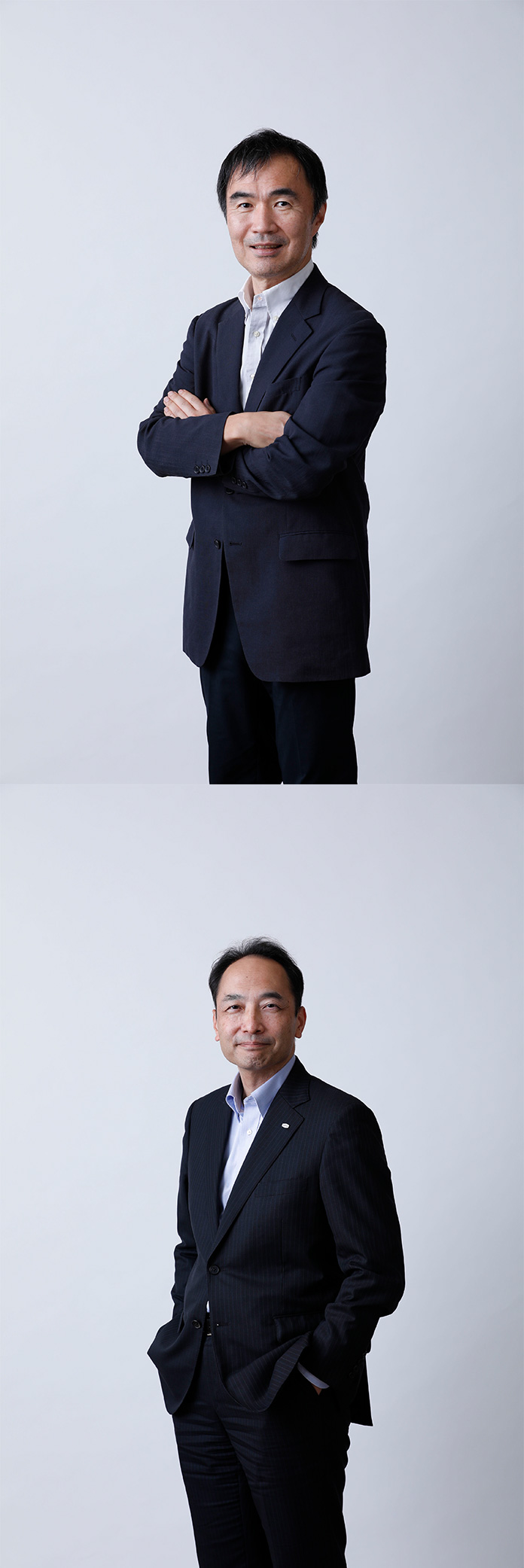
Sumitomo Mitsui Financial Group, Inc and The Japan Research Institute, Limited Digital Transformation

SMBC Group consists of various companies — including
Sumitomo Mitsui Banking Corporation (SMBC) and Japan
Research Institute — offering a broad range of
financial services such as banking, leasing,
securities, credit cards and consumer finance.
To
support the group’s overall business strategy of
“Transformation and Growth.” SMFG and Japan Research
Institute sought Red Hat Consulting’s help to
adopt
Red Hat OpenShift Dedicated
to ease the management of Red Hat OpenShift on
AWS. This enabled developers to better focus on
application development, such as the implementation
of business logic and administration of application
cycles, instead of spending time to configure and
manage the Red Hat OpenShift. With Red Hat
OpenShift Dedicated, SMFG and Japan Research
Institute can now adopt agile development,
accelerating their speed-to-market and ensuring
their competitiveness. After November 2020, both
organizations expect to be able to launch a new
service in several months, deploy a new feature or
application every day, and reduce the development
and operation costs to a third.
With Red Hat OpenShift Dedicated as our platform for application development, SMFG and Japan Research Institute can quickly release new digital services and continuously update them with new features. We’ll also adopt the agile development methods we’ve learnt from this project as our new standard way of developing digital services. This will enable us to offer value-added solutions that deliver better services to customers while ultimately helping to promote the group’s future growth with the support of IT.
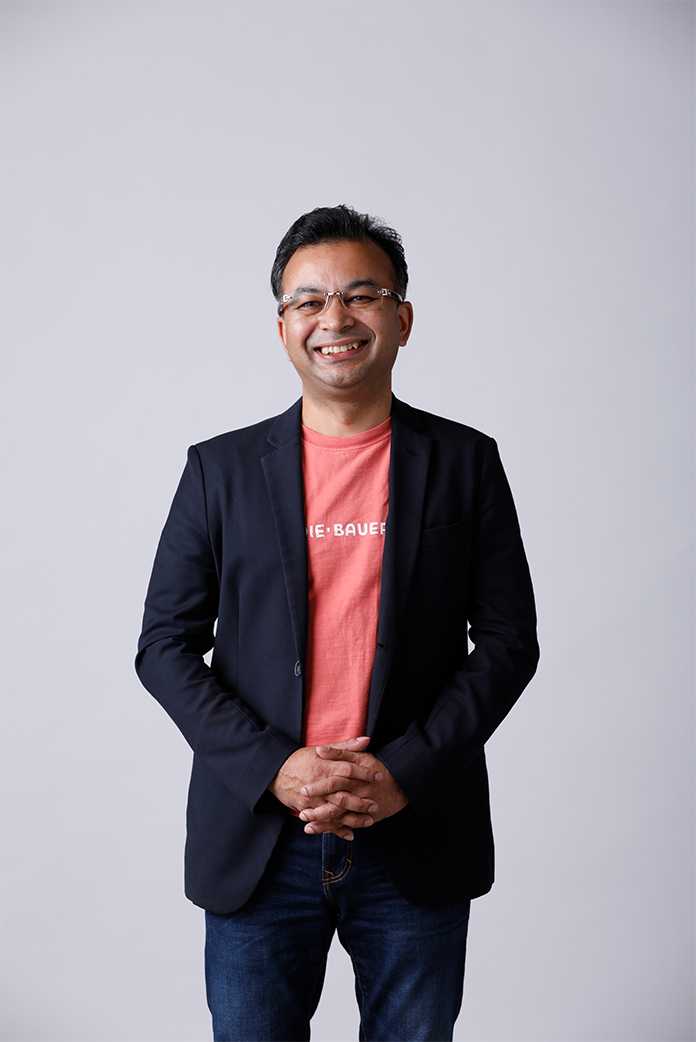
Australia
Heritage BankDigital transformation, Modern Application Development

With origins tracing back to 1875, Heritage Bank is Australia’s largest customer-owned bank and is one of the longest running financial institutions in Australia. Founded in Toowoomba, Heritage Bank prides itself on its “People First” ethos, and is committed to improving an excellent customer experience.
Currently, Heritage Bank is in the midst of a digital transformation to better meet its goal of delivering great customer experiences every time. However, its monolithic 40-year-old core system resulted in siloed teams and limited the bank’s architectural vision. Its business model needed to change, and the bank believed it was necessary to take an outside-in approach when architecting, delivering and evolving a digital platform.
To address that, Heritage Bank engaged Red Hat Open Innovation Labs, and was able to apply three strategies - microservices, APIs and containers - to create highly configurable architecture, to help Heritage Bank respond more quickly to market demands. The immersive nature of the Red Hat Open Innovation Labs experience also resulted in the bank having empowered, multi-disciplinary teams to better support the business.
By powering the new operating model within its IT
team with Red Hat solutions, Heritage Bank’s IT team
can now support business initiatives more
effectively. The solutions include
Red Hat Enterprise Linux,
Red Hat JBoss Enterprise Application Platform,
Red Hat Fuse,
Red Hat OpenShift Container Platform,
Red Hat Ansible Automation,
Heritage Bank is renowned for its ‘People First’ approach and our commitment to providing great banking experiences and exceptional customer service. However, we needed to find a way to modernize our older systems and processes to continue to evolve with our customers’ needs. Red Hat Open Innovation Labs helped us in our agile journey by providing our teams the needed training for maximum efficiency and productivity. With newer systems and less siloed teams, we can now focus on innovation to meet changing market demands.
OptusDigital transformation, Modern Application Development

Optus serves content and telecommunications capabilities to more than 10 million Australian mobile subscribers and provides enterprise services to many of Australia’s small, medium and large businesses.
As part of its 2020 CX Vision, Optus is aiming to transform customer experience by delivering exceptional value and digital experiences for customers.
To drive customer experience improvements, Optus developed a Cloud Core Contact Centre (C4), a cloud-native platform that allows microservices to be quickly developed and deployed in a DevOps environment with strong security capabilities. C4 breaks down complex monolith systems into smaller services, with each performing a precise functionality. Since a single microservice can be used in various use cases to perform the same function, Optus’ agile teams can prevent repeated efforts, resulting in faster iteration of new customer care functionalities. Optus also managed to adopt DevOps practices with C4. Featuring CI/CD pipelines with embedded security compliance checks, C4 enables the telco to modify architectures and release software without impacting the stability of operations or compromising the security of customer sensitive information.
With all these capabilities, Optus can rapidly develop and integrate new service technology functions – such as voice notes and intelligent routing – across its voice and messaging channels to deliver better customer experience. For instance, the Red Hat OpenShift-backed C4 supports the real-time transcription of customer calls and automation of categorisation of the transcript (also known as voice notes). These moves aim to help Optus’ contact centre agents capture more information from customer calls and reduce the time needed to summarise those calls. C4 also enables Optus’ service operations team to personalise the routing experience for customers who call. By doing so, Optus can help customers more effectively with minimal customer input, which could result in an enhanced customer experience.
Optus has always been a challenger, committed to creating a better and more connected future for Australia. To accelerate our transformation and deliver a new wave of solutions that create game-changing experiences for our customers, we are increasingly relying on open source software solutions which are now at the forefront of technology.
Australia
Australia and New Zealand Banking Group LimitedModern Application Development, Digital Transformation
ANZ Bank (ANZ) is one of the five largest listed companies in Australia by market capitalization and a leading bank in New Zealand, serving both consumers and businesses in the region. In 2017, ANZ needed to increase the speed of its software release cycle after the work in their API platform had grown significantly during the previous year. To enable a continuous integration and continuous delivery process, ANZ migrated to a solution based on Red Hat OpenShift Container Platform, Red Hat Enterprise Linux, Red Hat Gluster Storage, Red Hat Ansible Tower, and Red Hat Satellite.
The project began in phases in 2017, with migration of more than 25 services into containers within nine months. Using Red Hat OpenShift Container Platform, ANZ reports it reduced deployment time from hours to minutes, allowed development teams to deploy their own code into production, automated configuration, and enabled zero downtime deployments. The team also engaged Red Hat Consulting to help upskill the team and migrate the solution.
Since its initial rollout, ANZ added a Blue-Green deployment capability - a methodology that creates two identical production environments which enable upgrades to be made in the parallel environment and facilitate rollbacks to the old environment should a problem surface - in a matter of weeks. This created a continuous integration (CI) service that superseded its old CI processes.
ANZ is building a more adaptable bank to better meet the changing needs of our customers. Support from our vendors, such as Red Hat, are enabling this transformation
New Zealand Customs ServiceEnterprise Integration, Digital Transformation
The NZ Customs protects and promotes New Zealand at
the border.
As part of this role, NZ Customs installed eGates
(formerly SmartGates) - an automated self-service
passport check system that provides faster border
clearance. Between 20,000 and 25,000 passengers use
the eGates daily, with international visitor
arrivals forecasted to increase by 4.8 percent per
annum over the next five years. To enable smoother
processing at the borders and to avoid increasing
staff workload, NZ Customs embarked on an eGate
upgrade project.
With the help of SECTION6, an open source enterprise solutions consultancy and a Red Hat partner, NZ Customs Service developed a solution architecture based on Red Hat Enterprise Linux,Red Hat JBoss Enterprise Application Platform (JBoss EAP), Red Hat Fuse and Red Hat AMQ. With this new Red Hat-based platform, NZ Customs Service can more rapidly deliver modern applications and services, helping to modernise its entire portfolio of applications. Using open source technologies also became a catalyst for innovation at NZ Customs, helping to increase productivity and provide better service quality.
The upgraded eGate solution improved processing for both frontline staff and travelers. Based on its internal calculations, NZ Customs was able to increase the number of passengers processed by the modernized eGates, reduce manual processing, and reduce the average time required to process each passenger through the eGates.
New Zealand Customs is delighted to receive this award. Our upgraded eGate border processing solution has enabled faster and more reliable processing of passengers at the border which has improved their traveling experience and has allowed us to better cope with an increasing traveler population. The success of the project has clearly demonstrated the value that can be realized in a public service setting by working in an agile, collaborative way. As a result, agile and DevOps practices are being adopted to help accelerate other important pieces of work at New Zealand Customs. The confidence and trust that we have received from our key technology and business stakeholders would not have been possible without the support of SECTION6 and Red Hat.
Bangalore
Bharti Airtel LimitedDigital Transformation
With more and more applications moving to cloud footprints,Bharti Airtel wanted network infrastructure based on, on-premises private cloud to run Telco Operation tools.
Bharti Airtel implemented
Indonesia
Direktorat Sistem Informasi dan Teknologi Perbendaharaan, Ditjen Perbendaharaan, Kementerian KeuanganModern Application Development, Digital Transformation
The Directorate General of Treasury (DG of Treasury) is a government entity in Indonesia responsible for formulating and implementing the state’s treasury policies and technical standardizations. One of its applications, SAKTI (Financial Application System Level Institutions), is used for financial management and reporting purposes by the government, its ministries and military, and sees more than 7,100 total users. By 2020, DG of Treasury projects as many as 384,000 users - more than 54 times its current user base.
To better support this anticipated growth, the DG of Treasury migrated from JBoss AS 7.1, the upstream, community-based Java EE 6-compliant application server project to Red Hat JBoss Enterprise Application Platform (JBoss EAP) for its enterprise support and SLA. The DG of Treasury also deployed Red Hat OpenShift Container Platform to help support the many instances of its application and Red Hat Satellite to help manage patching for its operating system. Today, the team is able to deploy and scale out quickly through the use of Linux containers, bringing about time saving, increased efficiency and faster time to serve its stakeholders.
SAKTI is the first application that we have deployed on a container platform and many other divisions in the organization are eager to see the results of such a deployment. With the high expected growth in the use of the application, we are equally eager to see a successful first use. We are glad to have Red Hat as a partner on this journey and look forward to bringing more benefits to our stakeholders.
PT. Bank Rakyat Indonesia (Persero), Tbk.Cloud Infrastructure, Digital Transformation
Bank BRI is Indonesia’s oldest commercial bank and the largest by assets, loans and deposits. It focuses on Indonesian micro, small and medium enterprises, which Bank BRI believes represent the backbone of the Indonesian economy. Its vision is to become the most valuable bank in South East Asia and home to the best talent.
As an established bank, Bank BRI faced the challenge
of carrying many legacy infrastructure that it found
to be not suited for rapid changes required in the
current competitive environment. To enhance its
digital capabilities, Bank BRI looked to Red Hat for
help in developing a
hybrid cloud platform
business agility it requires. Using
With
Singapore
Energy Market Company Pte LtdModern Application Development
EMC was established in 2001 to operate the wholesale market of the National Electricity Market of Singapore (NEMS), Asia’s first liberalized electricity market. As the exchange for wholesale electricity trading, EMC provides a transparent and competitive trading platform through calculating prices, scheduling generation, clearing and settling market transactions, as well as supporting governance of the market.
EMC was due for a server hardware and applications refresh for its core settlement and Market Rules engine system. However, the proprietary stack it was built on was aging and restricting innovation efforts to support upgraded NEMS applications as stipulated by market regulations. To address this need, EMC migrated to Red Hat Enterprise Linux, Red Hat JBoss Enterprise Application Platform (JBoss EAP) and Red Hat Process Automation Manager, a tool for building business automation services and process-centric applications, to better position the team for innovation in line with future technologies. The move helped to reduce the total cost of ownership and improved time to market with increased scalability, flexibility, and efficiency in provisioning and deployment to multiple environments. The company also adopted Red Hat Ansible Tower to facilitate continuous integration and continuous delivery through IT automation.
The NEMS is an integral part of Singapore’s overall energy policy framework. Our operations are IT-intensive due to the sophisticated market model, the quantity of data, multiple communication links and the requirement to operate the market on a 24-hour basis every day. It is important that we keep up with continued innovation and we are glad to have Red Hat accompany us on this journey. We thank Red Hat for this recognition.
Singapore AirlinesModern Application Development, Digital Transformation
SIA is the flag carrier airline of Singapore and a global company dedicated to providing quality travel experiences for its customers, ranking as the world’s best airline in 2018 by SKYTRAX. In order to help keep the airline at the top of its passengers’ service experience, the IT department looked to improve its agility and better meet business requests.
SIA decided to transform the core architecture and delivery framework of its online flight reservation, redemption, check-in and loyalty program capabilities, enabling greater delivery speed and agility through modernization of its traditional monolithic design to one using microservice architecture delivered with an agile framework. Key technologies used include Red Hat OpenShift Container Platform, JBoss EAP, and Red Hat Data Grid deployed across its hybrid environment spanning on-premise datacentre and public cloud. Both the application and infrastructure teams were also upskilled through training courses and workshops, laying a foundation for the necessary competency to operate this new platform.
Through this technology transformation, the development team was able to better address business needs through more frequent releases. SIA reports that new features also have faster time-to-market by automating the continuous integration and continuous delivery processes, and speeding monthly deployments to a daily affair. Customer experience has also improved as a result of the platform’s auto-scaling and auto-healing capabilities.
Thailand
Ascend MoneyModern Application Development, Digital Transformation
Ascend Money is a Bangkok-based fintech company with reach across Southeast Asia that aims to improve the lives of the underbanked population and accelerate electronic payments in the region through its TrueMoney electronic payment system.
However, each of Ascend’s offices, which span six countries - Cambodia, Indonesia, Myanmar, Thailand, the Philippines and Vietnam - had its own way of deploying applications, making it impossible for them to deliver and reuse common services.
With Red Hat Enterprise Linux, Red Hat OpenShift Container Platform and Red Hat Satellite, more than 400 of Ascend’s application developers across six countries can access a common platform and deliver application services faster and more efficiently, helping the company to better serve its 20 million users.
Kasikorn Business-Technology GroupDigital Transformation
KBTG is the tech venture of Kasikorn Bank (KBank), one of Thailand’s largest banks, that works to connect fintech firms and tech startups. KBTG developed KPlus, Thailand’s most popular banking app with 15 million users. To boost its competitive advantage, KBank sought to make KPlus even more user-friendly, feature-rich and used by more people.
KBTG worked with Red Hat to deploy Red Hat Enterprise Linux, Red Hat JBoss Enterprise Application Platform (JBoss EAP), Red Hat AMQ, and Red Hat OpenShift Container Platform, giving it a flexible and agile foundation to bring artificial intelligence capabilities to KPlus, enabling customers to choose products and services that match their lifestyles. In addition, with an open standards-based technology structure, KBank can more easily connect with its partners’ platforms, enabling it to introduce more services to customers. By delivering enhanced features such as these, KBank hopes to expand its customer base by 2 million accounts a year for a total of 20 million accounts by 2021.
Japan
Fukuoka Financial Group, Inc.Digital Transformation
The Fukuoka Financial Group is a financial group with a history of about 140 years with approximately 5.7 million individual customers, approximately 220 thousand corporate customers. Fukuoka Financial Group participated in Red Hat Open Innovation Labs with the goal to improve corporate competitiveness, increase digital transformation, learn and practically implement the agile development methodology with DevOps, and implement in-house system development. They also adopted Red Hat OpenShift Container Platform as an application development and execution environment and deploy it on the public cloud.
The company established a Digital Strategy Department to lead its digital transformation efforts. The company aims to establish a system in which new products and services can be more quickly launched into the market by changing its working practices and corporate culture, and building faster development system using the new development methodology.
It is doing so by moving the system development and operations, which have up until now been outsourced, back into the company and using talent that will be capable of carrying out the agile development following the residency.
It is our great pleasure that we could win Red Hat Innovation Awards APAC 2018. In recent years, we have seen a need for reforms based on changes in the business environment. With our conventional waterfall-type development, centered on outsourcing, we have not been able to catch up with the competition. In order to provide new services to customers more quickly and effectively, it is essential to us to introduce agile development into the company. We believe it will help lead to our growth. It is important to learn new methods and practical skills, which can enable digital transformation and innovation, and establish culture to promote them. We feel that our employees will gain crucial new skills thanks to the participation in Red Hat Open Innovation Labs. We look forward to continued support from Red Hat as move through our digital transformation.
NTT Comware CorporationCloud Infrastructure
NTT COMWARE used Red Hat OpenStack Platform as the cloud infrastructure for its SmartCloud DevaaS 2.0, a PaaS development environment service, which provides on-demand access of features for the DevOps development based on development needs, such as development client, CI/CD server and test server.
NTT reports that SmartCloud DevaaS 2.0 has been introduced into approximately 3,000 VMs inside and outside the company. Within NTT, the company reports that the automation created a reduction in operation costs by 30 percent. In addition, the introduction has lead to improvement in agility. With the self-service function, it became possible to provide a development environment the same day, a process which used to take five days to provide. As the prompt procurement of development environments became possible, NTT reports its internal users have seen reductions in development period by 50 percent.
It is our great pleasure that we could win Red Hat Innovation Awards APAC 2018. By using Red Hat OpenStack Platform to help develop SmartCloud DevaaS 2.0, we were able to facilitate business innovation for our group companies and our customers. More than a year has passed since the service was launched and since then we have helped provide customers with more stable development environments that are helping them see lower operating costs through automation, increased agility through self-service options, and reduced man hours due to shorter development periods.
Malaysia
AmBank GroupDigital Transformation
AmBank Group is one of Malaysia’s premier financial solutions groups with 43 years of experience in supporting Malaysians. Currently, the Group is accelerating the next phase of its digital capabilities with a group-wide digital roadmap that focuses on integrating its services into the daily lives of its customers in an innovative and practical manner. As part of its digital journey, it aimed to provide better mobile banking and cash management in a manner that is easy, simple and fast for its valued customers across all touch points.
To help achieve this goal, AmBank Group deployed Red Hat Enterprise Linux, Red Hat OpenShift Container Platform, Red Hat Virtualization, and Red Hat Gluster Storage with the help of Red Hat Consulting. This allowed AmBank to build up its digital capability with a more agile and scalable application delivery. The effort also enabled the development of new applications and services which expanded its market reach to create new revenue streams.
It is an honour to be recognised through this prestigious award, as it is a testament to the AmBank Group’s commitment in delivering quality results and services to our customers. As part of AmBank’s digital transformation journey, we are continuously designing and implementing numerous new solutions with our customers in mind – to make their banking experience with us much more convenient, value-added and seamless.
Malaysian Administrative Modernisation and Management Planning Unit (MAMPU)Modern Application Development
MAMPU is a central agency of Malaysia’s Public
Service Administration, responsible for
modernization and transformation of the public
sector. As part of its role, MAMPU provides ICT
infrastructure and a standardized system for the
public service sector and its agencies. In alignment
with the country’s digital transformation initiative
and to better serve government agencies and enhance
its public services, MAMPU deployed
As part of Malaysia’s advancement towards becoming a smart city, MAMPU’s role as the central agency for the public sector is to configure an ICT platform that meets the requirements of the other government agencies. Open source has helped us enable more agile processes and further develop the capabilities of the Public Sector Office while ensuring effective use of our resources. We plan to increase the use and implementation of open source software across the agencies in the public sector and we thank Red Hat for this recognition.
Beijing
China Citic Bank Credit Card CenterEnterprise Integration, Modern Application Development
As a leading credit card service provider in China, CITIC Bank Credit Card Center is in the process of transforming its distributed architecture through the development of an end-to-end delivery and governance system. With the new system, the team aims to facilitate agile delivery, enable microservices management and intelligent operation and maintenance for faster business innovation, and facilitate IT quality control and IT risk management.
Key to its distributed architecture transformation is in continuous integration and continuous deployment (CI/CD). For this reason, CITIC Bank Credit Card center adopted DevOps process integrating development, operation, and maintenance processes, together with a CI/CD platform and other tools to form an end-to-end agile delivery model. CITIC Bank Credit Card Center deployed Red Hat’s open source technologies to create a container cloud platform based on microservice governance system to achieve more rapid application deployment, with CITIC Bank Credit Card Center reporting improving the application delivery efficiency by more than 50 percent. With its accelerated ability to support gated launches and to scale on-demand, the container cloud platform can meet CITIC Bank Credit Card’s requirements for business innovation and peak demands, laying the foundation for its next-generation credit card information systems.
Huatai Life Insurance Co.,Ltd.Cloud Infrastructure, Modern Application Development
Huatai Life Insurance Co., Ltd. (“Huatai Life”) is a Chinese life insurance company. Based on its digital strategy, Huatai Life began building an open source-based and autonomous private container cloud platform.
After an extensive evaluation process, Huatai Life chose Red Hat as its technology partner to design and deploy a new architecture based on Red Hat OpenShift Platform. This allowed the team to enhance system performance and development efficiency while reducing total cost of ownership. Huatai Life also consolidated the infrastructure platform to support its transformation and to support service innovation as part of its digital strategy. With the updated environment and a DevOps approach to IT, Huatai Life is able to more rapidly develop new insurance applications in line with business priorities and market demands.
Huatai Life pays much attention to the implementation of IT technologies in order to provide a powerful support platform for the business. With Red Hat OpenShift Container Platform and Red Hat Ceph Storage, Huatai Life built an autonomous private container platform, which laid a solid foundation for our digital strategy. Thanks to Red Hat for its recognition and support for Huatai Life.
Shanghai
China Merchants BankIT Optimization, Digital Transformation
China Merchants Bank Co., Ltd. (China Merchants Bank, CMB) was established in Shekou, Shenzhen in 1987. It is China's first joint-stock commercial bank wholly owned by corporate legal entities. With customer expectations for digital banking solutions and the emergence of new competitors, China Merchants Bank saw the need to accelerate its transformation with a more flexible platform.
To modernize its previously centralized structure and gradually move towards an open and flexible distributed architecture, CMB deployed Red Hat Enterprise Linux, Red Hat JBoss Enterprise Application Platform and Red Hat Ansible Tower to establish a standardized, process-oriented and automated platform. CMB also worked with Red Hat Training to certify and equip its system administrators with the skills it needed to deliver the platform. The new Red Hat-based platform enabled CMB to deliver personalized and mobile services to its active users.
We regard financial science and technology reforms as one of our top priorities for the next three to five years. With Red Hat solutions, we were not only able to achieve greater technology and business agility and focus on building mobile Internet and managing data workloads. Thanks to Red Hat for contributing in our digital journey.
Shanghai International Automobile City Group Co., Ltd.Cloud Infrastructure
Shanghai International Automobile City (Shanghai International Automobile City Group CO., LTD.), established in 2001, focused on accelerating the development of new energy vehicles, promoting their use and improving its business model. With increasing innovations in autonomous driving, Shanghai International Automobile City aims to promote further collaboration within the automobile industry and to create a world-class automobile innovation center.
In order to provide auto manufacturers with an application platform for test scenarios such as smart car, connected vehicle and closed test demonstrations, and to support the resulting volume of data, Shanghai International Automobile City built a unified, open and standard hybrid cloud platform with Red Hat Enterprise Linux, Red Hat Ceph Storage, Red Hat OpenStack Platform and Red Hat CloudForms. This open source-based, highly scalable private cloud platform enabled test data to be shared more efficiently among auto industry vendors, providing a higher-quality and more stable platform for multi-vendor collaboration.
Our cloud platform project enables us to address information silos among branches and across our business, and for implementing technical R&D and data analysis of smart connected vehicles, thus building a data analytics platform which incorporates and manages multiple data centers in a unified way. With Red Hat, we have built a unified, open and standard hybrid cloud platform to support autonomous driving data collection in China and provide a standard data exchange platform for other intelligent driving technologies.
Korea
Doosan Information & CommunicationsDigital Transformation
Doosan Information & Communications provides IT services for Doosan affiliates worldwide, including IT consulting and system integration, application system services, and IT infrastructure services. Doosan Information & Communications adopted Red Hat Ansible Tower to strengthen the management of its private IaaS platform which is used as the foundation of its hybrid cloud environment. Through the use of Red Hat Ansible Automation, Doosan Information & Communications simplified and automated its IT service management, leading to enhanced productivity.
We are pleased to receive the Red Hat Innovation Awards APAC. Red Hat Ansible Tower has enabled us to implement new features to our system more quickly and to realize the potential of open source and its communities. With the adoption of Red Hat solution, we have enhanced the quality of our IT services and established a strong foundation for our cloud transition.
Korea Electric Power CorporationDigital Transformation
Korea Electric Power Corporation is an electric utility responsible for electricity generation, transmission and distribution, including overseas research, development, and sales. The electric power industry is transforming as digital technologies and renewable energy conversion take hold. To drive its digital transformation, the Korea Electric Power Corporation migrated its UNIX-based system infrastructure to Red Hat Enterprise Linux and deployed an IT infrastructure for its research work based on Red Hat technologies.
It means a lot to us to receive the recognition from the Red Hat Innovation Awards APAC for our IT infrastructure deployment. With the various advantages of open source software and Red Hat technologies, we were able to enhance the system flexibility, spend expense more efficiently and run a stable service. With our ICT-based energy service, KEPCO plans to continue its research in sustainable energy conversion and digital transformation through more efficient data processing and analytics using our platform.
Taiwan
Cathay United BankEnterprise Integration, Digital Transformation
CUB is one of the largest commercial banks in Taiwan, with market leadership in securities service delivery, core banking, credit card and wealth management solutions. Through continuous innovation, quality customer service, in-depth understanding in asset management and a vast network of online service touchpoints, it has received several awards for outstanding performance in the consumer finance industry.
As fintech becomes more prevalent, CUB embarked on a digital transformation plan to help keep abreast of foreseeable disruption in the financial industry. Following its rigorous evaluation process, CUB adopted Red Hat OpenShift Container Platform and Red Hat Fuse to implement a Platform-as-a-Service (PaaS) for its banking services, together with Red Hat Satellite and Red Hat JBoss Enterprise Application Platform (JBoss EAP). With its new platform, CUB finds that it now has capabilities that enable it to compete with fintech providers, including improved time to market for its digital services. The platform has also reduced the total cost of ownership and improved the team’s flexibility in resource management.
Looking back at how far we have come today, it would not have been achievable with our previous monolith architecture. Red Hat has been very proactive in working with us to create a solution that fits our needs and helps us future-proof our system from evolving business demands and industry competition. Cathay United Bank will continue to innovate and provide better service to our customers, together with Red Hat to help guide us on this journey.
Taiwan Futures ExchangeIT Optimization, Digital Transformation
TAIFEX has been committed to the development of Taiwan's futures market since its establishment in 1997. Faced with changing market demands and increasing globalization, TAIFEX has embraced agile development and deployment processes to better address the evolving market. In order to enhance system efficiency, break free from vendor lock-in and improve its competitive edge, TAIFEX migrated from its legacy UNIX system to an open source platform based on Red Hat Enterprise Linux and Red Hat Satellite, successfully launching its new trading system in 2016.
The migration to its Red Hat-based platform enabled TAIFEX to launch new asset classes, cut latency by 75 percent, improve performance consistency, and launch after-hour trading sessions.
Working with Red Hat has exposed us to open source culture and kept us up-to-date on emerging technology and a new chapter in our system. The new system has given us the competitive advantage to help keep our trading platform at the leading edge and give the team global recognition. Thank you Red Hat for recognizing our efforts and achievements.
Australia
IAGCloud Infrastructure, The Open Source Way

IAG is the parent company of a general insurance group with controlled operations in Australia, New Zealand, Thailand, Vietnam and Indonesia. Due to its large scale, it was necessary to consolidate its infrastructure and the multiple silos it had grown into to create a single data organization and displace the costs it was incurring. IAG decided to move to the cloud with the help of Red Hat Consulting and use open source tools including Red Hat Enterprise Linux, Red Hat OpenStack Platform, Red Hat Virtualization, Red Hat Satellite, and Red Hat Ansible. The result was a platform that can develop and deliver better solutions to customers more efficiently, and can better maintain customer satisfaction. Through the project, IAG also started recognizing the value of open source, and now has a number of engineers contributing to various open source projects, with plans to open source some of its newly developed solutions.
Before the project, we were faced with different versions of information, making it impossible to make an informed business decision. Red Hat had been a trusted partner of IAG and was the natural choice for us when we set out to consolidate the system. Thanks to this project, we are now able to have greater visibility of what our customers are thinking and better serve their needs. This award speaks to the success of not just our business, but also of open source, and we look forward to creating a more beneficial community for all.
 (From left) Eddie Satterly, Leader, Data
Engineering & DataOps, IAG; Max McLaren,
Vice President and General Manager, Red Hat,
ANZ
(From left) Eddie Satterly, Leader, Data
Engineering & DataOps, IAG; Max McLaren,
Vice President and General Manager, Red Hat,
ANZ
Qantas Airways LimitedEnterprise Integration

Founded in 1920, Qantas is Australia’s largest
domestic and international airline. It is widely
regarded as the world’s leading long distance
airline and one of the strongest brands in
Australia. Qantas is in the middle of a radical
business transformation that is focused on putting
the customer at the core of everything they do. It
believes that gaining an intimate understanding of
their customers, and targeting them individually
with personalized, relevant omni-channel
communication will help improve its competitive
edge. To deliver on this mandate, Qantas adopted
Red Hat JBoss Enterprise Application Platform
and
The use of APIs have helped Qantas to deliver responsive, contextual products and services to customers across all stages of their journey with us. With a continually evolving capability to move from idea to service in the shortest space of time, together with unprecedented level of insight into the customer experience, Qantas is primed to respond to customer feedback through a more agile approach. Our systems are delivering additional business value thanks to the enterprise integration that Red Hat enables. It has been an honor to receive this Award and we look forward to furthering our business transformation journey with Red Hat.
 (From left) Jessica Lin, Manager, Digital
Technology and Services, Qantas Airways
Limited; Max McLaren, Vice President and
General Manager, Red Hat, ANZ
(From left) Jessica Lin, Manager, Digital
Technology and Services, Qantas Airways
Limited; Max McLaren, Vice President and
General Manager, Red Hat, ANZ
Bangalore
DHFL Pramerica Life Insurance Company LtdDigital Transformation

DHFL Pramerica Life Insurance Company Ltd. (DPLI) is a leading insurance company in India with a wide network of more than 100 branches across the country. In line with the company’s vision to be a digital leader in the insurance sector, DPLI sought a technology partner to help them realise this while balancing their IT investments, provides them speed to innovate and bring new features to its customers.
Using Red Hat's technologies, Red Hat Mobile Application Platform and Red Hat JBoss BRMS, the turn-around time for DPLI has been reduced to 24 hours from 7 working days as servicing branches receive proposal on real time basis and data discrepancy has been reduced by around 25%.
When we embarked on our digital transformation journey, the idea was to work with a leading business partner and Red Hat presented us with a compelling mobile platform proposition. Without vendor lock-in and based on open standards, the platform helps our business respond to market changes with agility.
Digital is becoming embedded in every business. Digital strategies in the most mature organizations are included with an eye on transforming the business. By joining hands with Red Hat, our main aim was to bring in seamless mobility experience for our customers and transform the business real-time. The result is improved business agility, consistent and efficient decision execution, shorter development cycles, and faster time to market.
 (From left) Rajesh Rege, managing director,
India, Red Hat; Bhupesh Arya, vice president,
DHFL Pramerica Life Insurance Company Limited;
and Yash Sultania, alliance head, Gemini
Solutions, technology partner for the
project.
(From left) Rajesh Rege, managing director,
India, Red Hat; Bhupesh Arya, vice president,
DHFL Pramerica Life Insurance Company Limited;
and Yash Sultania, alliance head, Gemini
Solutions, technology partner for the
project.
Indonesia
PT Astra Aviva LifeIT Optimization

Since its launch in November 2014, Astra Life’s business has been underpinned by a strong partnership collaboration, delivering a wide variety of product to customer segments across the nation. Astra Life believes that information technology (IT) is the backbone of its company and contributes as a major support for all company activities. With proper use, Astra Life can provide the best service to the customers while enabling efficiency, reliability, and accuracy in data processing and reporting. To better serve their customers, Astra Life used Red Hat JBoss Middleware solutions to build faster and more effective applications that allow multiple distribution channels for the sale of their policies, as well as enable access for customers and partners to their insurance information anytime, anywhere.
We believe that the concept of insurance protection is not only used when we feel an unexpected risk, like an umbrella used when rain comes, but a trampoline that helps people to jump higher without worrying about all the risks. Working with Red Hat is the same, and it has allowed us to reach higher, faster, better, and more cost effectively during our digital transformation journey. We are honoured to receive this recognition, which is testament to the work we have done.
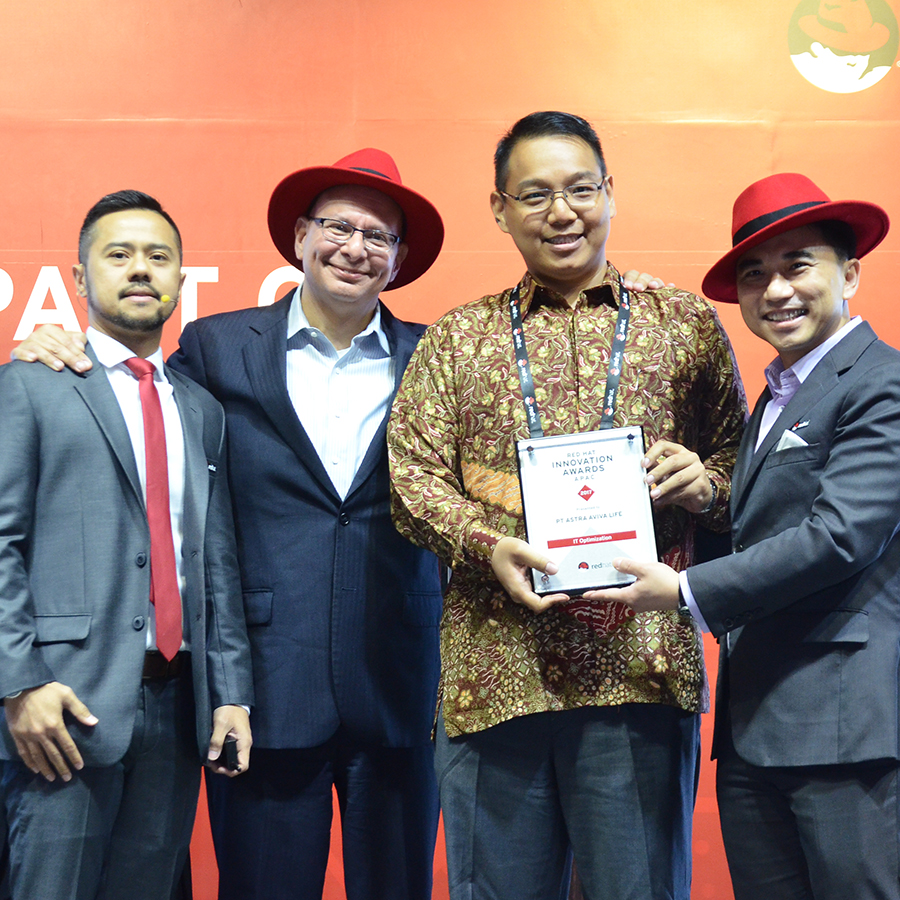 (From left) Rully Moulany, Country Manager,
Red Hat, Indonesia; John Allessio, Vice
President, Global Services, Red Hat; Ronny
Tan, Head of IT, PT Astra Aviva Life; and
Damien Wong, GM and VP, Red Hat, Southeast
Asia, Taiwan and Hong Kong
(From left) Rully Moulany, Country Manager,
Red Hat, Indonesia; John Allessio, Vice
President, Global Services, Red Hat; Ronny
Tan, Head of IT, PT Astra Aviva Life; and
Damien Wong, GM and VP, Red Hat, Southeast
Asia, Taiwan and Hong Kong
PT Bank Tabungan Pensiunan Nasional TBKModern Application Development, Digital Transformation

BTPN is a well-recognized commercial bank in Indonesia, with a vision of changing the lives of millions of Indonesians. To help increase the people's access to banking services, BTPN created Jenius, a digital bank in Indonesia, with Red Hat OpenShift at the heart of its digital platform. This allowed BTPN to use a DevOps approach to develop and deliver applications more quickly.
Our key strategic initiative is to transform
ourselves to become a customer centric bank
powered by digital, putting our customers at
the center of what we do. As part of this
journey a complete overhaul of the IT
process and infrastructure is underway. To
achieve this, we needed to build a new fully
automated and robust end to end development
pipeline. After thorough consideration,
Red Hat OpenShift was the logical
choice because of its capabilities, features
and performance. We thank Red Hat for the
award, as well as the commitment we have
received from the team on this journey.
 (From left) Rully Moulany, Country Manager,
Red Hat, Indonesia; John Allessio, Vice
President, Global Services, Red Hat; Jufri
Fan, IT Solution Architect Head, Information
Technology, PT Bank Tabungan Pensiunan
Nasional Tbk; and Damien Wong, GM and VP, Red
Hat, Southeast Asia, Taiwan and Hong
Kong
(From left) Rully Moulany, Country Manager,
Red Hat, Indonesia; John Allessio, Vice
President, Global Services, Red Hat; Jufri
Fan, IT Solution Architect Head, Information
Technology, PT Bank Tabungan Pensiunan
Nasional Tbk; and Damien Wong, GM and VP, Red
Hat, Southeast Asia, Taiwan and Hong
Kong
Singapore
DBS Bank Limited Modern Application Development, Digital Transformation

DBS is a leading financial services group in Asia, with over 280 branches across 18 markets. Headquartered in Singapore, DBS has been immersed in the digital agenda with the belief that the banks of the future will look fundamentally different from the banks of today. From re-architecting its technology infrastructure to transforming its front end, DBS is seeking to become digital to its core. To help achieve this goal, DBS deployed Red Hat OpenShift Container Platform to provide agility and scalability. With a next-generation architecture, DBS is now able to build new applications and improve user experiences at a faster pace, and also deliver quicker enhancements or incremental services offerings to better compete in the digital world.
Our digital agenda has been an all-encompassing journey, be it changing the culture and mindsets of our people, re-architecting our technology infrastructure, or leveraging Big Data, biometrics and AI to make banking simpler and more seamless for our customers. Leveraging open source technology, such as Red Hat’s, has provided us with the necessary tools and insights to help drive our digital efforts. Being one of the winners of the Red Hat Innovation Awards APAC is a privilege and is testament to our efforts to help shape the future of banking.
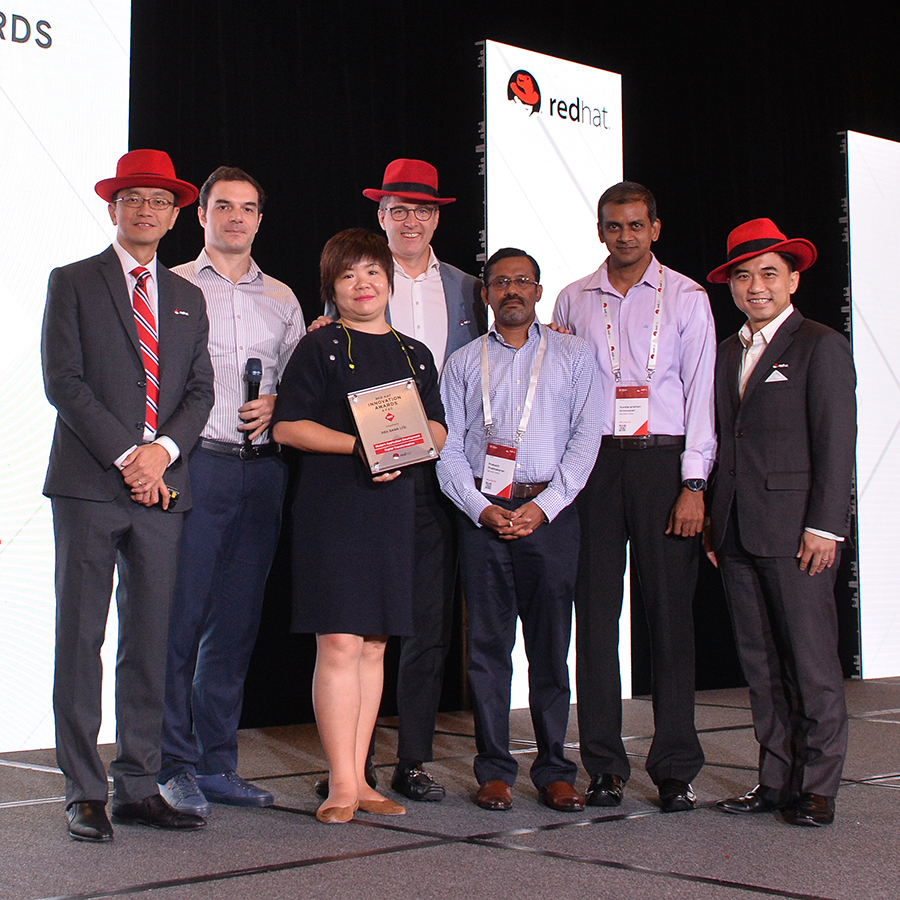 (From left) Richard Koh, Country Manager, Red
Hat, Singapore; Carl Kharazmi, Senior Vice
President, Cloud Engineering, DBS Bank; Joan
Tay, Executive Director, Technology, DBS Bank;
DP van Leeuwen, SVP and GM, Red Hat, APAC,
Prakash Prabhakaran, Vice President, Cloud
Technology Services, DBS Bank; Sundararaman
Srinivasan, Senior Vice President, DBS Bank;
and Damien Wong, GM and VP, Red Hat, Southeast
Asia, Taiwan and Hong Kong
(From left) Richard Koh, Country Manager, Red
Hat, Singapore; Carl Kharazmi, Senior Vice
President, Cloud Engineering, DBS Bank; Joan
Tay, Executive Director, Technology, DBS Bank;
DP van Leeuwen, SVP and GM, Red Hat, APAC,
Prakash Prabhakaran, Vice President, Cloud
Technology Services, DBS Bank; Sundararaman
Srinivasan, Senior Vice President, DBS Bank;
and Damien Wong, GM and VP, Red Hat, Southeast
Asia, Taiwan and Hong Kong
MyRepublic Group LtdCloud Infrastructure, Digital Transformation

MyRepublic is a TelcoTech company that offers telecommunications services in Singapore, Indonesia, New Zealand, and Australia using their proprietary cloud-based platform. As the company was expanding, MyRepublic found it increasingly challenging to innovate and grow via its existing infrastructure. Using Red Hat OpenStack Platform, Red Hat Ceph Storage, and Red Hat CloudForms, MyRepublic created a more scalable cloud platform as part of its open hybrid cloud initiative. With its uniquely scalable and centralized framework enabling more seamless delivery of layered services, MyRepublic has become an innovator in the digital transformation for the telecom sector.
Working with Red Hat has been an amazing experience on all fronts. For the IT team, we gained access to new technologies and the technical knowledge to better serve our business needs. For the business, we were able to expand more quickly into new markets and new services. For our customers, they were able to enjoy a more stable connection due to higher system availability and lower latency. Our success would not have been possible without Red Hat helping us meet our timelines. We are elated on the win and look forward to more successes in the future.
 (From left) Richard Koh, Country Manager, Red
Hat, Singapore; Sebastian Wieseler, Head of IT
& Security, MyRepublic Group Ltd; Eugene
Yeo, Group Chief Information Officer,
MyRepublic Group Ltd; DP van Leeuwen, SVP and
GM, Red Hat, APAC; and Damien Wong, GM and VP,
Red Hat, Southeast Asia, Taiwan and Hong
Kong
(From left) Richard Koh, Country Manager, Red
Hat, Singapore; Sebastian Wieseler, Head of IT
& Security, MyRepublic Group Ltd; Eugene
Yeo, Group Chief Information Officer,
MyRepublic Group Ltd; DP van Leeuwen, SVP and
GM, Red Hat, APAC; and Damien Wong, GM and VP,
Red Hat, Southeast Asia, Taiwan and Hong
Kong
Thailand
MIMOTech Co., Ltd.Enterprise Integration

A subsidiary of AIS - Thailand’s leading mobile operator - MIMO Tech operates as an IT operator, content aggregator, and application development support for AIS and its other subsidiaries. Among its roles is to help support customer calls from AIS.
AIS was in the midst of expanding its business offerings to include fiber solutions for homes and 4G mobile connections. In preparation for the business expansion, MIMO Tech turned to open source solutions to consolidate the many systems that were used for its operations. With the help of Red Hat Enterprise Linux, Red Hat JBoss Enterprise Application Platform, and Red Hat JBoss Fuse, AIS was able to increase the effectiveness and efficiency of its employees to better address customers’ demands, thereby helping to increase customer satisfaction.
“Our strategy was first envisioned after consolidating several suggestions from our customers. After evaluating solutions from different vendors, Red Hat was most suitable for our business requirements. Winning the Awards is a great honor for our efforts, and we look forward to working closely with Red Hat as we grow our business.”
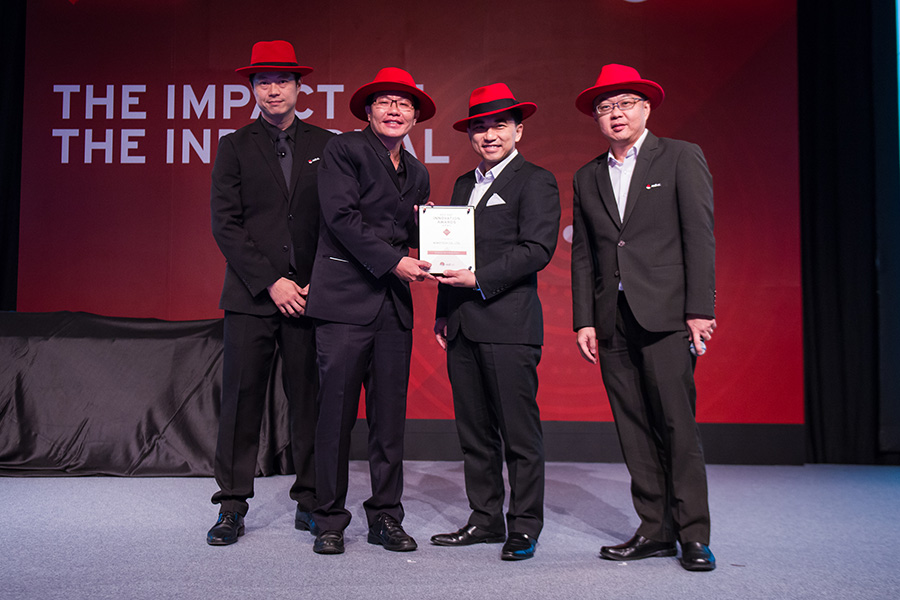 (From left) Kawinthorn Bhutrakul, Enterprise
Account Manager, Red Hat, Thailand; Damien
Wong, GM and VP, Red Hat, Southeast Asia,
Taiwan and Hong Kong; Dr. Suphachet
Phermphoonwatanasuk, AVP - ICT Solutions
Architect, AIS; Law Yaw Hu, Regional Director,
ASEAN Growth Economies, Red Hat
(From left) Kawinthorn Bhutrakul, Enterprise
Account Manager, Red Hat, Thailand; Damien
Wong, GM and VP, Red Hat, Southeast Asia,
Taiwan and Hong Kong; Dr. Suphachet
Phermphoonwatanasuk, AVP - ICT Solutions
Architect, AIS; Law Yaw Hu, Regional Director,
ASEAN Growth Economies, Red Hat
Japan
National Institute of Information and Communications Technology IT Optimization, Cloud Infrastructure

National Institute of Information and Communication Technology (NICT) is a public research institute in Japan specializing in research and development of information and communication technology. NICT performs various studies, with an eye to reporting results of the research and development and creating innovation, in cooperation with industries, universities, and other research institutes. NICT introduced Red Hat OpenStack Platform to build a more stable and flexible virtual platform for its network services. Currently in the verification/testing phase of the system, the burden on system administrators was reduced and the quality of service stabilized by using Red Hat OpenStack Platform. NICT was also able to build an infrastructure that will be able to provide faster and more reliable services into the future.
It is our great pleasure to receive the Red Hat Innovation Award APAC 2017. Having been able to embody a scenario of study we had imagined through the adoption of Red Hat OpenStack Platform, we could lead the result to a beneficial study toward more stable supply of flexible and reliable services in the future. We hope to be able to return this research to society as a study to help support the next generation innovative network system.
 (From left) Hirokazu Mochizuki, VP, Red Hat
Japan; DP van Leeuwen, SVP and GM, Red Hat,
APAC; Dr. Hiroaki Harai (engineering), chief
of Network Science and Convergence Device
Technology Laboratory, Network System Research
Institute, National Institute of Information
and Communication Technology; Paul Cormier,
Executive Vice President, Products and
Technologies, Red Hat; and James Whitehurst,
President and CEO, Red Hat
(From left) Hirokazu Mochizuki, VP, Red Hat
Japan; DP van Leeuwen, SVP and GM, Red Hat,
APAC; Dr. Hiroaki Harai (engineering), chief
of Network Science and Convergence Device
Technology Laboratory, Network System Research
Institute, National Institute of Information
and Communication Technology; Paul Cormier,
Executive Vice President, Products and
Technologies, Red Hat; and James Whitehurst,
President and CEO, Red Hat
NTT DOCOMO, INC.IT Optimization

NTT DOCOMO, one of Japan's largest telecommunications company, introduced a virtual infrastructure using Red Hat OpenStack Platform for “CiRCUS” and “MAPS” to provide ISP service (i-mode/sp mode) for end users, and to replace their legacy physical servers. Red Hat OpenStack Platform became its new cloud infrastructure to help reduce workload related to infrastructure with automatization of system construction. In addition to Red Hat OpenStack Platform’s ability to help curb costs, the company was drawn to its ability to work with existing systems, allowing for more flexibility and Red Hat's high quality support for their mission critical environment during the migration.
While the introduction of Red Hat OpenStack Platform into the mission critical system domain was a challenge, we are very glad to be recognized for it. We have been pushing ahead with the system migration with steady development, while keeping system quality high. Consequently, we are realizing the benefits of building a flexible infrastructure according to business conditions and automatic IT management.
 (Third from left) Takaaki Sato, GM, Service
Design Department, NTT Docomo
(Third from left) Takaaki Sato, GM, Service
Design Department, NTT Docomo
Malaysia
Suruhanjaya Syarikat Malaysia Enterprise Integration

SSM is Malaysia's sole statutory body that incorporates companies and registers businesses. As the leading authority for the improvement of corporate governance, SSM ensures compliance with business registration and corporate legislation through comprehensive enforcement and monitoring activities.
With the aim of eliminating all manual handling of registration and transitioning to an automated online process, SSM used Red Hat Enterprise Linux, Red Hat Satellite, Red Hat JBoss Enterprise Application Platform, and Red Hat JBoss Fuse to replace its existing IT system, and lay the foundation for its organizational transformation plan.
 (From left) Damien Wong, GM and VP, Red Hat,
Southeast Asia, Taiwan and Hong Kong; Farid
Ahmad, Director, Marketing and Business
Development Division, Suruhanjaya Syarikat
Malaysia; and Chew Kai Peng, Country Manager,
Red Hat, Malaysia
(From left) Damien Wong, GM and VP, Red Hat,
Southeast Asia, Taiwan and Hong Kong; Farid
Ahmad, Director, Marketing and Business
Development Division, Suruhanjaya Syarikat
Malaysia; and Chew Kai Peng, Country Manager,
Red Hat, Malaysia

Beijing
China Welfare Lottery Issuance and Management CentreDigital Transformation, Modern Application Development

The China Welfare Lottery Distribution and Management Center is a unit directly under the Ministry of Civil Affairs of the People's Republic of China, and is responsible for the nation's welfare lottery distribution and sales. To realize a multi-channel sale of the lottery tickets, the China Welfare Lottery Distribution and Management Centre decided to build a distributed cloud architecture to support the operations of its lottery applications while providing autonomous control. With Red Hat OpenStack Platform, Red Hat Enterprise Linux and Red Hat Ceph Storage, the centre quickly launched a new OpenStack platform in their private cloud, and saw benefits across the operation and maintenance, development and business departments.
Our journey towards open source and innovation is aligned to the national strategy of digital economy industry development and innovation-driven development. To keep pace with change brought about by the Internet+ era, China Welfare Lottery Issuance and Management Centre adjusted our informatization strategy. We thank Red Hat for its provision of open source technologies and services, and for the great support in ensuring the success of our global infrastructure planning process and business application operations. We expect to face new challenges, new changes and new opportunities as we build our "Smart Lottery" project, so we hope to continue developing and advancing with our partners.
China Mobile Research InstituteCloud Infrastructure

The China Mobile Research Institute began its research in network technology in 2015, and conceptualized a possible future network called NovoNet - a 3-layer decoupled network architecture with a new data center, new network and new brain as its core. Since then, the team performed extensive experimentations and pilots targeted at NovoNet. Using Red Hat OpenStack Platform, China Mobile was able to undertake the research and development in an innovative way, which resulted in time and cost savings during the proof-of-concept phase.
We thank Red Hat for their support in our research and pilot efforts to further the development of network technology.
Shanghai
Wanda Internet Technology GroupDigital Transformation, Modern Application Development

As part of its digital transformation efforts, Wanda Internet Technology Group needed a platform to implement DevOps and the use of new technologies, such as microservices. Using Red Hat Enterprise Linux, Red Hat OpenShift Container Platform and Red Hat Gluster Storage, the Red Hat Global Professional Services team helped migrate financial applications to the PaaS platform, which laid the foundation for flexible scalability and upgrades in the future. At the same time, the solution provided a new application deployment model using containers, which enhanced business flexibility.
At Wanda Internet Technology Group, we consistently look at adopting new technologies to promote the business development. The reconstruction was very smooth - we successfully containerized our systems and gone live within a matter of weeks. Wanda Internet Technology Group will continue to refine the container, cloud computing, big data and AI technology to drive IT industry change. We look forward to more successful collaboration with Red Hat in the future.
CFETS Information Technology (Shanghai) Co., LtdModern Application Development, Digital Transformation

CFETS Information Technology (Shanghai) Co., Ltd.
(CFETS IT) is a wholly owned subsidiary of China
Foreign Exchange Trading System & National
Interbank Funding Center. To adapt to fast growth
demand for the foreign exchange market and flexible
foreign exchange trading, CFETS IT decided to
utilize mainly open source software to deploy a
distributed application architecture. With
Red Hat Ansible Tower, the company achieved quick and automated resource
configuration, and migrated from Weblogic-based
solution to
This was a major digital transformation in CFETS IT. During the first phase of the transformation, we worked together with Red Hat to deliver a high-quality new generation trading platform. The successful go-live of this platform was a great first step for our digital transformation as it enhanced our trust in open source software and provided the confidence needed to continue working with Red Hat.
Shenzhen
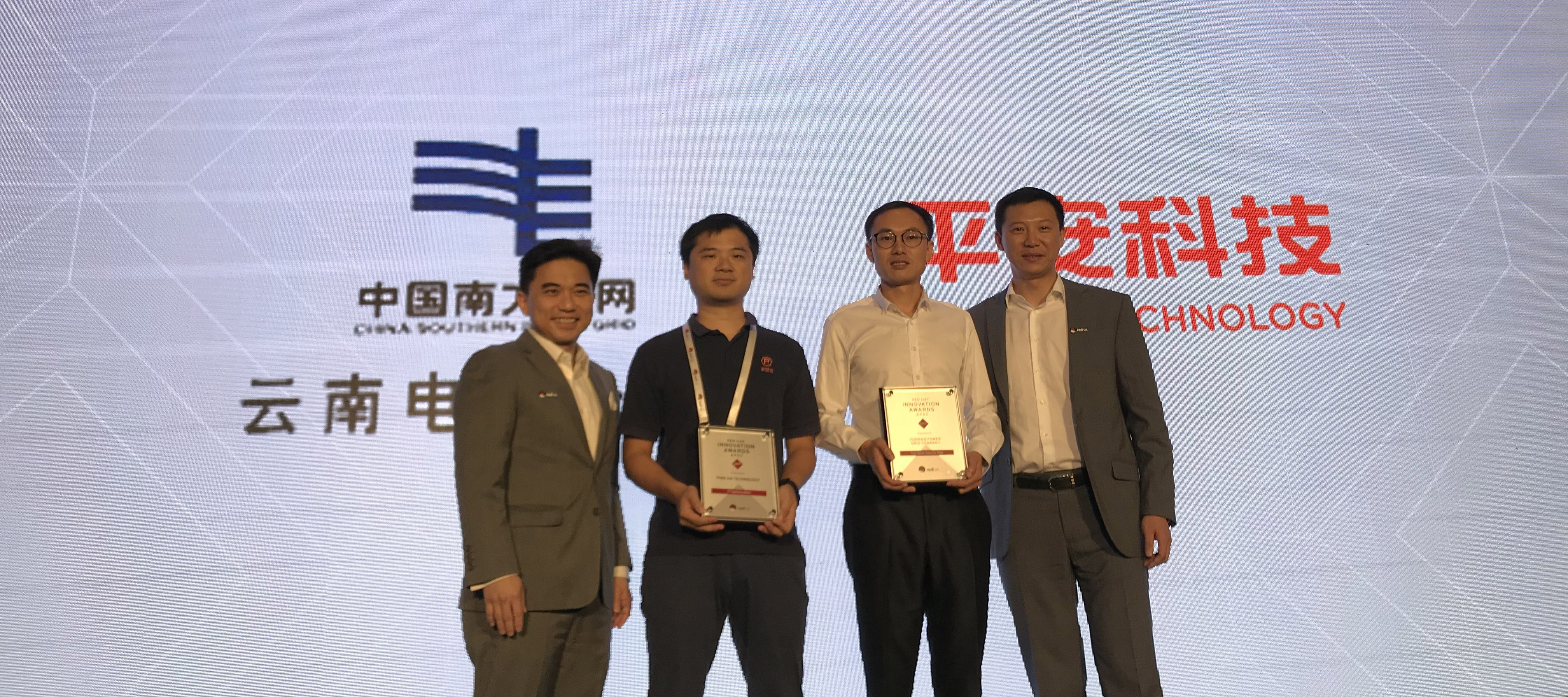
Yunnan Power Grid CompanyThe Open Source Way

The Information Center of Yunnan Power Grid Co., Ltd. is the department responsible for constructing, operating and maintaining the provincial-level information system of Yunnan Power Grid. It specializes in R&D, construction, operation and maintenance of the system application platform. By using Red Hat OpenShift Container Platform with prebuilt Kubernetes and Docker at the core of Yunnan Power Grid's DC/OS cluster, the team was able to optimize data center resource management and scheduling, improve the resource utilization and scheduling efficiency, and enable applications to be scheduled and run on the appropriate base resources automatically. Meanwhile, the company improved its overall application delivery process, and created an application-centric cloud platform, which provided faster delivery capability to meet IT demand for business development, testing, operation and maintenance. In addition, automated scalability also mean that the team was able to meet sudden peaks in access demands to ensure the business was always-on.
Through the use of Red Hat OpenShift Container Platform and support from Red Hat, we were able to effectively reduce R&D manpower and time cost, while maintaining autonomous control and achieving continuous development of the platform.
Ping An TechnologyIT Optimization

Established in 2008 as a wholly owned subsidiary of Ping An Group, Ping An Technology currently has more than 4,000 professional IT technical staff and IT management experts. Ping An Cloud Platform is a product of Ping An Technology's "cloud" strategy. Since its inception, Ping An Technology has adhered to finance-level security standards and continuously enhanced the cloud platform's stability and reliability. By using Red Hat Enterprise Linux, Red Hat Satellite and Red Hat Ceph Storage, it has not only reduced the costs of deep technology R&D, but also kept continuous iterations of IT systems, so that 90 percent of its end users can acquire secure and quality services when using this financial cloud platform.
Open source and innovation has always been how we look to develop the Ping An Cloud Platform. We are grateful for Red Hat's affirmation. "The only unchanging thing in the world is change itself." We have always believed that IT optimization and innovation is a continuous and dynamic process. By relying on collaboration-centered open sources and pooling the power of the collectives, we will give birth to more stunning products and services. And we will always uphold this idea of creating an open cloud platform, so as to encourage IT innovations and enrich the industries in the future via the latest clouds, big data, artificial intelligence and other technologies.
Hong Kong
Cathay Pacific AirwaysDigital Transformation
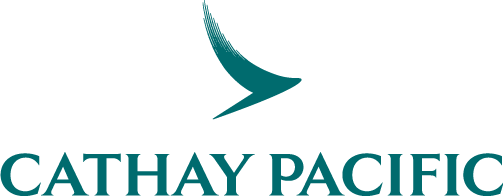
Cathay Pacific Airways is an international airline registered and based in Hong Kong, offering scheduled passenger and cargo services to 198 destinations in 49 countries and territories. With a digitally enabled business strategy that puts customer at its core, Cathay Pacific looked to innovate with a comprehensive cloud solution. This solution provides stability through standardization, centralized management and application deployment capabilities that enables speed to market that can support the overall strategy. Cathay Pacific developed its cloud platform by introducing several Red Hat technologies and services, including Red Hat OpenShift Container Platform, Red Hat JBoss Enterprise Application Platform, Red Hat CloudForms, Red Hat Ansible Tower, Red Hat Enterprise Linux and Red Hat Satellite.
Cathay Pacific is committed to driving a customer-centric and digitally-enabled business. The old models of infrastructure service delivery do not support these requirements for us specifically in terms of cost, quality and time to market. We needed to adapt more quickly in what is a fast changing world. We needed to balance the hype of public cloud versus the reality of a complex application and server environment that means one size doesn’t fit all. And we needed to be able to provide a range of services that our business demands. Our Red Hat solutions help provide that – an integrated hybrid cloud, allowing centralized management of resources regardless of whether they are public or private combined with standardization of service for better support and transformational capabilities in application deployment.
 (From left) Peter Man, Regional Director,
Hong Kong, Macau, Taiwan & South China,
Red Hat; Kerry Peirse, General Manager IT
Infrastructure & Operations, Cathay
Pacific Airways; Damien Wong, GM and VP, Red
Hat, Southeast Asia, Taiwan and Hong
Kong
(From left) Peter Man, Regional Director,
Hong Kong, Macau, Taiwan & South China,
Red Hat; Kerry Peirse, General Manager IT
Infrastructure & Operations, Cathay
Pacific Airways; Damien Wong, GM and VP, Red
Hat, Southeast Asia, Taiwan and Hong
Kong
Korea
National Information Resources Service Digital Transformation

National Information Resources Service (NIRS) is the government institute responsible for managing the Korean government’s internet data center for e-government services. Using Red Hat solutions, NIRS has improved the reliability and security of its e-government service.
It is inspiring to receive the APAC Red Hat Innovation Award. We will continuously make efforts to adopt innovative technology and make improvements to provide more highly reliable service and grow as a trusted organization for the citizens.
 (From left) DP van Leeuwen, SVP and GM, Red
Hat, APAC; and Myoung Hee Kim, president,
National Information Resources Service
(From left) DP van Leeuwen, SVP and GM, Red
Hat, APAC; and Myoung Hee Kim, president,
National Information Resources Service
Shinhan Financial GroupIT Optimization

Shinhan Financial Group, a leading financial holding company in Korea, built a new IT strategy on open source by deploying Red Hat solutions to its subsidiaries’ infrastructure so as to increase its response time in a digitizing financial environment. One of Shinhan Financial Group’s subsidiaries, Shinhan Investment Corp successfully migrated from UNIX to Linux for both its financial accounting and information systems. With Red Hat solutions, Shinhan Financial Group achieved business advantages in greater cost efficiencies and increased agility in its operations.
We are very pleased to receive the APAC Red Hat Innovation Award which recognizes companies who have successfully innovated their business. In responding to digital transformation, we will continue to contribute to the developing open source ecosystem to accelerate digital transformation of the financial industry.
 (From left) DP van Leeuwen, SVP and GM, Red
Hat, APAC; and Tea Won Kuk, senior vice
president, Shinhan Investment
Corporation
(From left) DP van Leeuwen, SVP and GM, Red
Hat, APAC; and Tea Won Kuk, senior vice
president, Shinhan Investment
Corporation
Taiwan
E.SUN BankIT Optimization, Digital Transformation

As one of the best banks in Asia, E.SUN Bank needed to maintain and improve its competitive edge through digital transformation. To start, the bank needed to build a flexible standardized business platform. With Red Hat Enterprise Linux, Red Hat Satellite, Red Hat JBoss Enterprise Application Platform and Red Hat JBoss BPM Suite, E.SUN Bank gained a quick and resilient IT environment, and achieved a faster go-to-market.
Thanks Red Hat for its affirmation and encouragement with the Award. We look forward to continuing our collaboration with Red Hat, and providing better services for our customers.
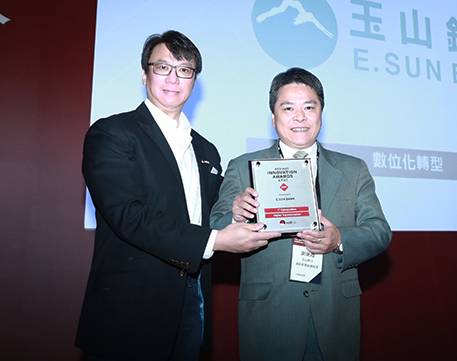 (From left) Peter Man, Regional Director,
Hong Kong, Macau, Taiwan & South China,
Red Hat; Wanlt Hsieh, CIO and Executive
Vice-President, E.SUN Bank
(From left) Peter Man, Regional Director,
Hong Kong, Macau, Taiwan & South China,
Red Hat; Wanlt Hsieh, CIO and Executive
Vice-President, E.SUN Bank
Sydney
Macquarie Bank

Macquarie Bank has been working to transform its retail digital capabilities over the past 18 months. In building a new digital banking offering from the ground up, the bank sought to offer its customers a truly intuitive and personalised digital banking experience. The new digital banking environment offers customers a full view of both their personal banking and wealth management holdings, enabling them to manage their finances in one place in an intuitive and engaging way.
We’re honoured to be named as the recipient of a Red Hat Innovation Award at this year’s Forum. In building our new personalised and intuitive digital banking offering, we sought to provide customers with features that we believe to be a first of their kind in Australian banking and tools that are more like the social media sites, search engines and video or music streaming services our customers currently use. To achieve this we required a platform for execution and delivery that supports a constant stream of innovative solutions. Working with Red Hat enabled us to achieve greater agility and speed to market in a fast-changing technology landscape.
 (From left) Rajay Rai, Digital Architect,
Macquarie Bank; and Max McLaren, Vice
President and General Manager, ANZ, Red Hat,
at Red Hat Forum Sydney 2016.
(From left) Rajay Rai, Digital Architect,
Macquarie Bank; and Max McLaren, Vice
President and General Manager, ANZ, Red Hat,
at Red Hat Forum Sydney 2016.
Macquarie transforms digital banking experience for customers
Beijing

Capitalonline Data Service Co., Ltd

Based in China, Capitalonline Data Service offers secure and stable cloud computing services to its customers around the world. As such, customers can effectively cope with the rapid development seen in the Internet industry, particularly in areas related to gaming, video, online education and big data.
Capitalonline deployed Red Hat OpenStack Platform and Red Hat Ceph Storage to build a cloud office environment. This migration from a traditional hardware environment slashed hardware, operational and maintenance costs as well as enabled future integration to the Global Interconnected Cloud (GIC) system.
Red Hat provides us with a flexible, efficient, scalable private cloud platform to meet our business growth, while to lay the foundation for providing global customers with our own global private network to lay the foundation.
Lenovo

Lenovo, a multinational technology manufacturer, wanted to achieve a digital transformation and focus on adopting Internet+, a Chinese government strategy that aims to support economic growth through the integration of IT and the internet with manufacturing and industry. To achieve this transformation, its IT team needed to efficiently develop and launch many applications. Lenovo sought to deploy a Platform-as-a-Service (PaaS) solution to provide the agile and cloud capabilities needed to meet demand and gain competitive advantage. By deploying Red Hat OpenShift Container Platform, the company decreased system deployment time and improved productivity through greater automation and increased support for collaborative DevOps work.
With a Platform-as-a-Service built on Red Hat OpenShift Container Platform, along with our automated managent tools, we can provide efficient and agile cloud services internally and externally.
Shenzhen
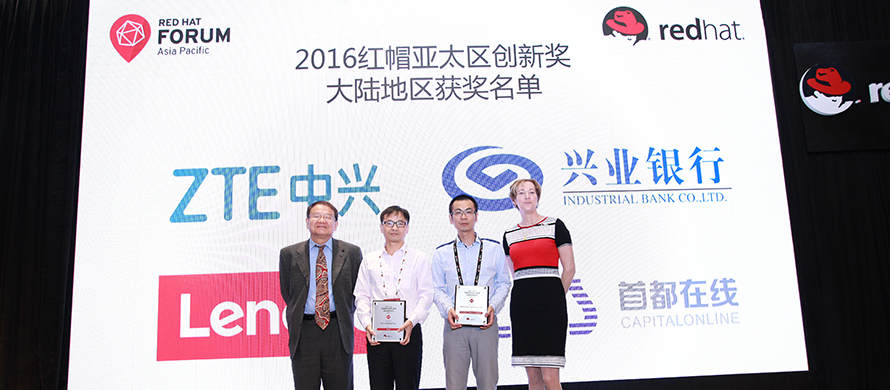
Industrial Bank Co., Ltd.

Founded in August 1988 and headquartered in Fuzhou, Fujian Province, Industrial Bank (IB) is one of the first batch of joint-stock commercial banks approved by the State Council and the People's Bank of China, and the first Equator Bank in China. Over 20 years, IB has been advocating the philosophy of "Sincere Service, Growing Together" and endeavored to offer comprehensive, top-quality, and high-efficient financial service for customers.
ZTE Corporation

ZTE Corporation (ZTE) is a leading global provider of integrated communications solutions, ranging from voice, data, and multimedia to wireless broadband. Enabling network operators and enterprise network clients in more than 160 countries, ZTE needed to be able to navigate the ever-changing challenges faced in a global communications industry. As a solution, ZTE turned to Red Hat® OpenShift PaaS Container Platform and Red Hat Enterprise Linux to not only extend its competitive edge but also to prepare for the next generation 5G telecommunications standards.
It is an honour to win 2016 Red Hat APAC innovation award. Over the years, ZTE has been actively exploring the SDN/NFV technology, telecom cloud solutions for end to end. Through the open source technology to create a healthy and sustainable development of the ecosystem, to help telecom operators to build a on-demand definition of network and rapid business innovation platform. After deep strategic cooperation with the Red Hat and contribution to the OpenShift community, we overcomed the traditional IT platform network performance, complex application scheduling difficulties and other key technical issues, complete the ICT fusion cloud platform CloudWorks. At the same time, we also hopes to follow more in-depth technical cooperation, more participants, to promote the community to meet a wider range of application areas.
Hong Kong
CargoSmart

CargoSmart is one of the world's largest integrated international container transportation, logistics and terminal companies. It is listed on the Hong Kong Stock Exchange with networks encompassing Asia, Europe, North America and Australasia. The organization needed to scale out in a short period of time to improve efficiency and time to market. Therefore, they embarked on a journey with Red Hat’s OpenStack and CloudForms which provided a stable platform matched with high capabilities. It also paved the way for future expansion.
We are the very first enterprise in Hong Kong to implement Red Hat OpenStack Platform in a production system. Red Hat has the most open-source developers and contributors on the OpenStack platform, which greatly helps our project evaluation stage and implementation stage.
 (From left) Peter Man, Regional Director,
Hong Kong, Macau, Taiwan & South China,
Red Hat; Eric Wong, Assistant General Manager,
CargoSmart; Margaret Dawson, Director, Global
Product Marketing, Platform & Solution
Marketing, Infrastructure, Red Hat
(From left) Peter Man, Regional Director,
Hong Kong, Macau, Taiwan & South China,
Red Hat; Eric Wong, Assistant General Manager,
CargoSmart; Margaret Dawson, Director, Global
Product Marketing, Platform & Solution
Marketing, Infrastructure, Red Hat
CargoSmart modernizes its software-defined data center with Red Hat OpenStack Platform
Mumbai
Credit Information Bureau Ltd (CIBIL)

The Credit Information Bureau India Limited (CIBIL) is the first and leading credit bureau of India, earmarked as a National Critical Asset. To achieve a faster response time to credit report requests from its member banks, CIBIL adopted Red Hat technologies in a four-phase project to virtualize, migrate, configure and maintain its mission critical systems. This has allowed CIBIL to successfully reduce its server footprint, decrease capital expenditure, improve performance and enjoy better security.
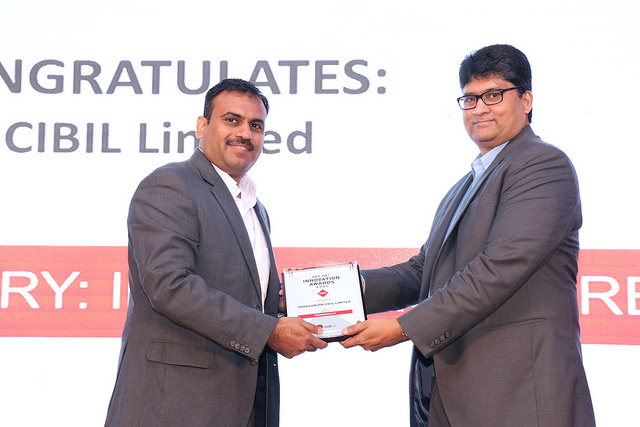 (From left) A Shiju Rawther, Assistant Vice
President - Technology, TransUnion CIBIL
Limited; Rajesh Rege, Managing Director,
India, Red Hat
(From left) A Shiju Rawther, Assistant Vice
President - Technology, TransUnion CIBIL
Limited; Rajesh Rege, Managing Director,
India, Red Hat
New Delhi
Employees' Provident Fund Organisation (EPFO)

The Employees’ Provident Fund Organization assists the tripartite Board in India to administer a contributory provident fund, pension scheme and an insurance scheme for the workforce engaged in the organized sector in India. Consisting of offices at 122 locations across the country, EPFO embarked on a project with Red Hat to reduce the time in information exchange and to reduce the lengthy verification process by consolidating the data under one roof.
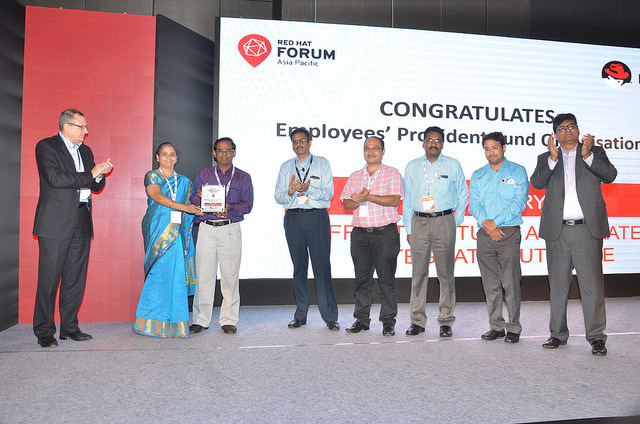 The team from EPFO accepting the accolade on
the mainstage of Red Hat Forum New
Delhi.
The team from EPFO accepting the accolade on
the mainstage of Red Hat Forum New
Delhi.
Bengaluru
National Stock Exchange of India Ltd.

National Stock Exchange of India Limited (NSE) is one of the leading stock exchanges, both in APAC and globally. NSE provides a core platform for traders and investors for various activities such as stock, currency, commodity, and derivatives trading. With increased accessibility to trading, NSE needed to maintain its competitive edge and strengthen its ability to handle the growing transactions with a modern, fully automated screen-based trading system.
Red Hat solutions were strategic in helping NSE successfully move towards its goal of becoming the world's largest stock exchange in terms of trading volume and the range of products and services offered.
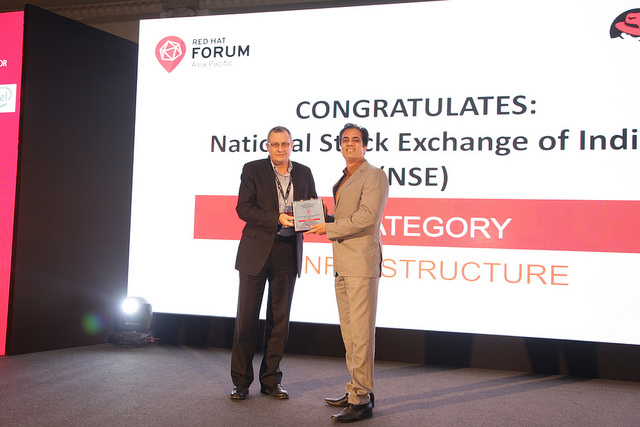 (From left) Phil Andrews, Vice President
Enterprise Sales & Strategic Business
Development, APAC, Red Hat, and Viral Modi,
Vice President, NSE.
(From left) Phil Andrews, Vice President
Enterprise Sales & Strategic Business
Development, APAC, Red Hat, and Viral Modi,
Vice President, NSE.
Tokyo
Asahi Tekko

Asahi Tekko was founded in 1948 and is in the manufacturing industry. They would like to build an internal system that optimizes production efficiency with the use of IoT technology. With the help of Red Hat, Asahi Tekko successfully decreased manufacturing, manpower and operation costs. They were also able to monitor the system in real-time with flexibility and accuracy.
 (From left) DP van Leeuwen, SVP and GM, Red
Hat, APAC; James Whitehurst, President and
CEO, Red Hat; Tetsuya Kimura, President, Asahi
Tekko CO.,LTD; Hirokazu Mochizuki, VP, Red Hat
Japan
(From left) DP van Leeuwen, SVP and GM, Red
Hat, APAC; James Whitehurst, President and
CEO, Red Hat; Tetsuya Kimura, President, Asahi
Tekko CO.,LTD; Hirokazu Mochizuki, VP, Red Hat
Japan
SoftBank

Softbank is a telecommunications company and have been looking to modernize their system that is responsible for all mobile phone-related contracts. Key to the system is high accuracy and robustness. With Red Hat’s technical strengths in open source, Softbank was able to improve on capabilities and reduce overall cost. They also gained first mover advantage with a system that is so flexible.
 (From left) DP van Leeuwen, SVP and GM, Red
Hat, APAC; James Whitehurst, President and
CEO, Red Hat; Yoshimitsu Sano, Senior
Director, Consumer System Division, SoftBank
Corp.; Hirokazu Mochizuki, VP, Red Hat
Japan
(From left) DP van Leeuwen, SVP and GM, Red
Hat, APAC; James Whitehurst, President and
CEO, Red Hat; Yoshimitsu Sano, Senior
Director, Consumer System Division, SoftBank
Corp.; Hirokazu Mochizuki, VP, Red Hat
Japan
Seoul
POSCO ICT
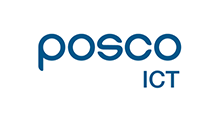
POSCO ICT needed a low-cost, high efficiency IT system due to spending cuts amidst a low growth season. The company drastically reduced costs and increased internal capabilities by configuring its smart factory IT environment with Red Hat Enterprise Linux, Red Hat Enterprise Virtualization and Red Hat JBoss instead of using proprietary solutions.
We have worked with Red Hat to run open source reliably for the last 10 years, and we will continue this relationship to identify and build new growth drivers.
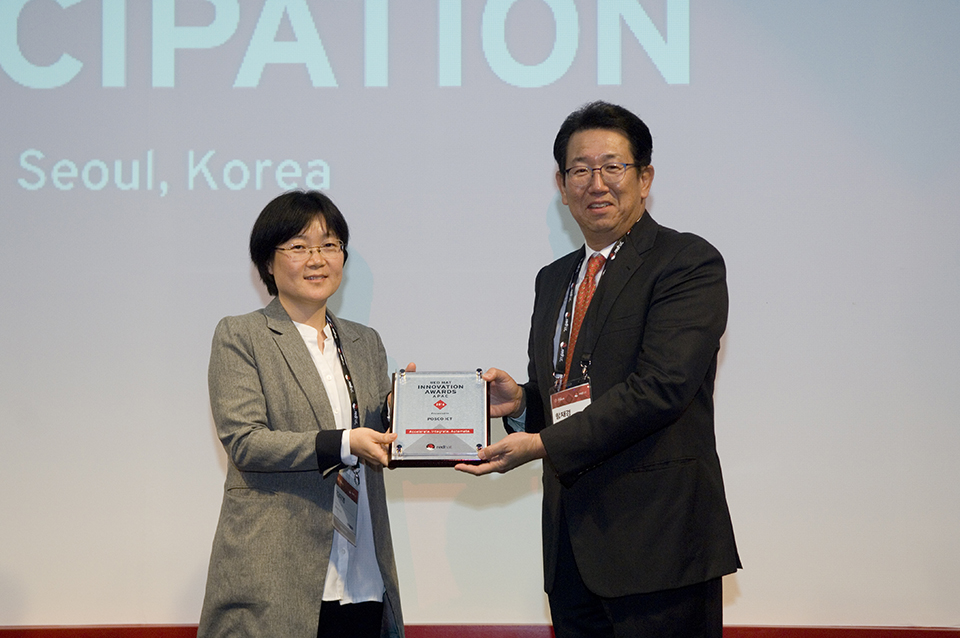 (From left) Mi Young Kim, Business Unit
Manager, POSCO ICT, with Hahm Jae-kyung,
General Manager, Korea, Red Hat.
(From left) Mi Young Kim, Business Unit
Manager, POSCO ICT, with Hahm Jae-kyung,
General Manager, Korea, Red Hat.
National Computing & Information Service (NCIS)

National Computing and Information Service (NCIS) is the Korean government’s institute responsible for managing the government’s internet data center for e-government services, which is used nationwide by its government employees and all citizens. Together with Red Hat, NCIS developed a software-defined data center based on a private cloud infrastructure using open source software. This resulted in the development of the world’s first Government Integrated Data Center.
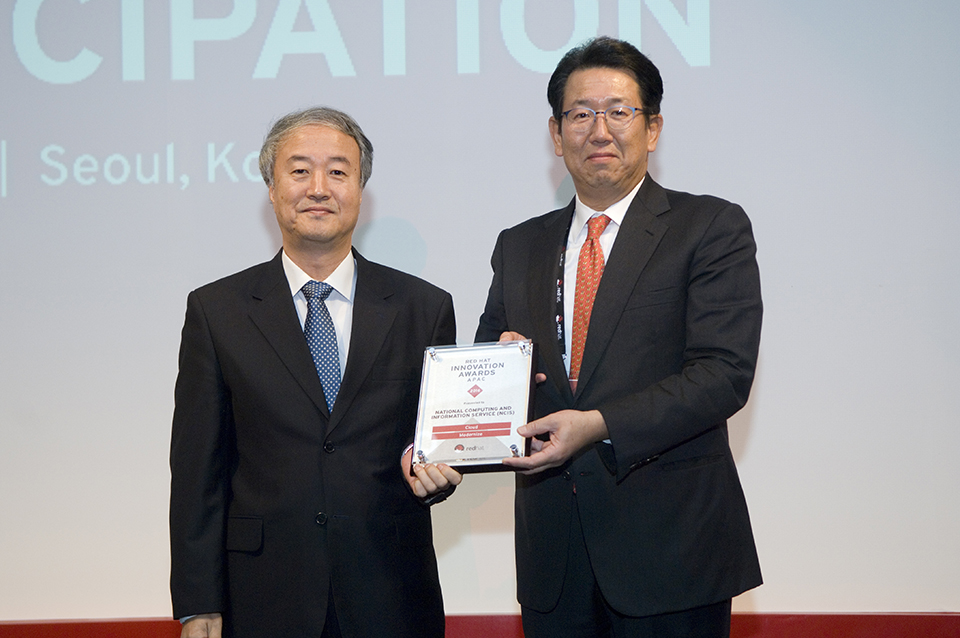 Representative from NCIS accepting the award
from Hahm Jae-kyung, General Manager, Korea,
Red Hat (right)
Representative from NCIS accepting the award
from Hahm Jae-kyung, General Manager, Korea,
Red Hat (right)
Kuala Lumpur
Tenaga Nasional Berhad (TNB)
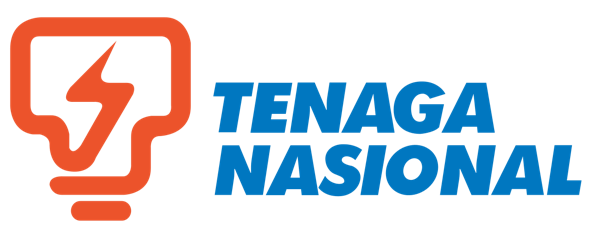
TNB is the largest electricity utility in Malaysia and one of the largest in the southeast Asia region. Recently, TNB embarked on an IT transformation to modernize it existing IT environment that was previously based on proprietary UNIX systems. The new platform allowed TNB to create a stable, reliable and more secure infrastructure platform, capable of taking on today’s challenges with the flexibility to adapt to tomorrow’s requirements.
As Malaysia’s largest electrical utility company, TNB handles significant volumes of workloads every day. In our quest to modernize our IT environment, we turned to Red Hat to help us improve automation, scalability, agility and security. Red Hat's subscription model and open source solutions not only offered us these advantages, but it has also helped us innovate and enhance our customer experiences.
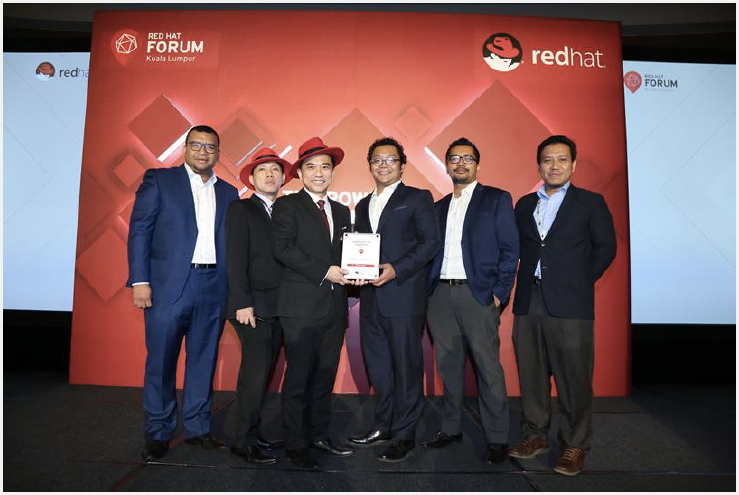 Nasrin Abg Omar (third from right), General
Manager of DCX, Tenaga Nasional Berhad,
accepting the award with his team from Damien
Wong (third from left), Vice President and
General Manager, ASEAN, Red Hat, at Red Hat
Forum 2016, Kuala Lumpur.
Nasrin Abg Omar (third from right), General
Manager of DCX, Tenaga Nasional Berhad,
accepting the award with his team from Damien
Wong (third from left), Vice President and
General Manager, ASEAN, Red Hat, at Red Hat
Forum 2016, Kuala Lumpur.
Singapore
Government Technology Agency of Singapore (GovTech)
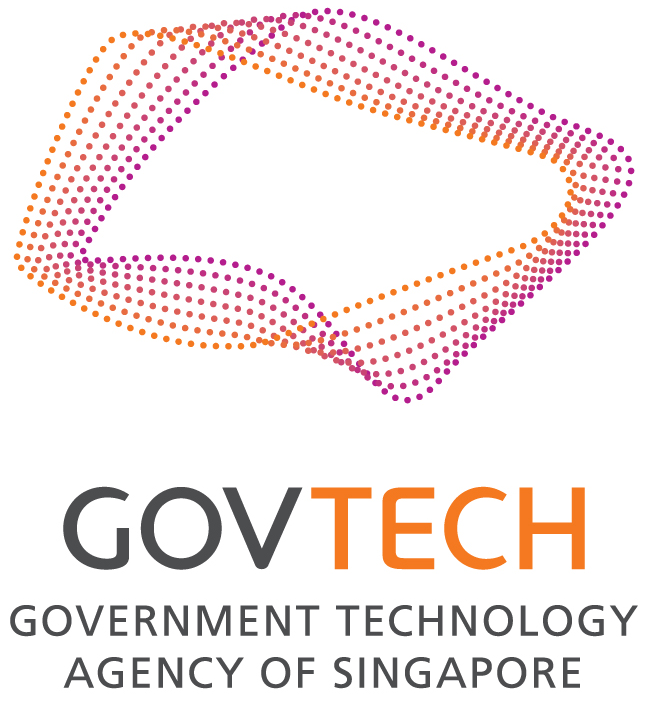
To push forth Singapore's vision of becoming a smart nation, GovTech developed a Platform-as-a-Service (PaaS) solution for the Singapore government using Red Hat OpenShift Container Platform. The innovative use of open cloud technology enables government agencies to quickly develop, host and scale applications. Red Hat OpenShift Container Platform not only helps in accelerating innovation but also helps GovTech to create and deploy applications with speed and consistency.
We love the challenge of building NECTAR, an open cloud native application infrastructure for the government of Singapore, as it requires us to design, build, deploy and operate a Platform-as-a-Service that can meet stringent government requirements while maintaining usability, reliability and agility. The team couldn’t have done it without great support from Red Hat, the open source community and our partner agencies including Ministry of Finance (MOF), Ministry of Communications and Information (MCI) and Smart Nation and Digital Government Office (SNDGO).
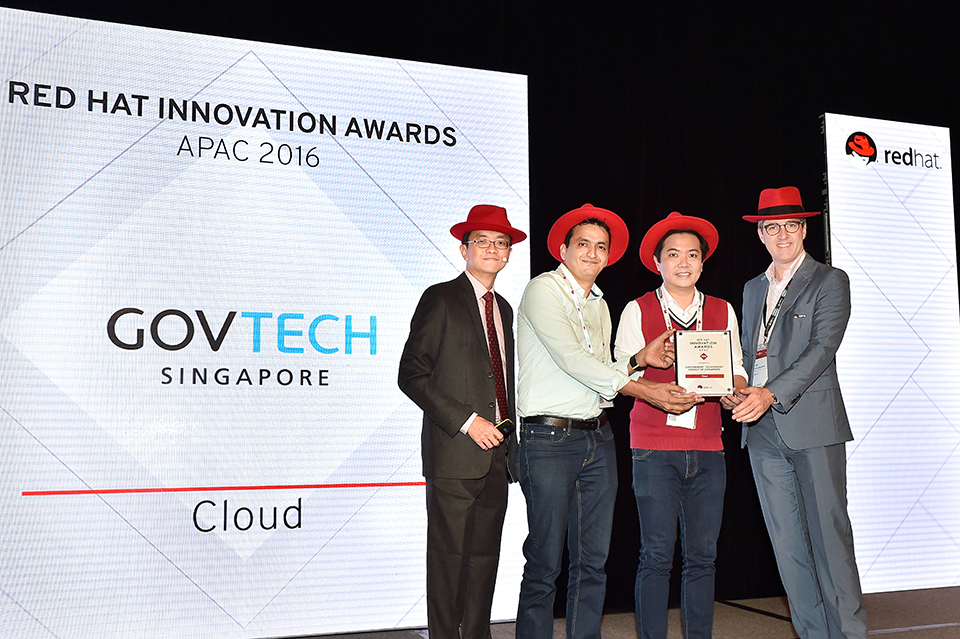 (From left) Richard Koh, Country Manager,
Singapore, Red Hat; Parimal Aswani, Director,
Technology, Government Digital Services,
GovTech; Mark Lim, Director, Government
Digital Services; and DP van Leeuwen, SVP and
GM, Red Hat, APAC
(From left) Richard Koh, Country Manager,
Singapore, Red Hat; Parimal Aswani, Director,
Technology, Government Digital Services,
GovTech; Mark Lim, Director, Government
Digital Services; and DP van Leeuwen, SVP and
GM, Red Hat, APAC
Nanyang Technological University (NTU)
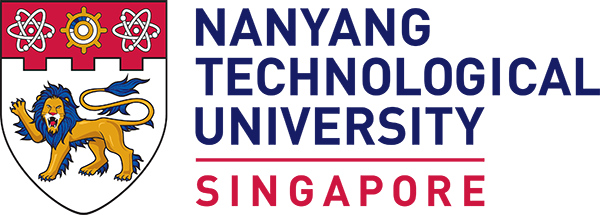
Ranked 13th globally and 1st amongst the world’s best young universities, NTU Singapore has in recent years positioned itself firmly at the forefront of strategic research in Singapore, helping to fuel Singapore's drive for research and innovation. Its Smart Mobility Test Bed (SMTB) project aims to build cutting edge Intelligent Transportation Systems (ITS) that enhance public transportation services and commuter safety, pushing new frontiers in technology. To increase its infrastructure and operational efficiency, NTU reached out to Red Hat to create a highly scalable and modular, container-based platform that can also handle the dynamism of the platform.
NTU’s Smart Mobility Test Bed (SMTB) Project Team and High Performance Computing Centre, together with Red Hat form a collaborative tripartite team to deliver a versatile and scalable container-based cloud infrastructure to support complex cutting edge Intelligent Transportation Systems (ITS) that can enhance public transportation services and commuter safety. This collaboration has been exciting and challenging, but purposeful, and exemplifies how NTU together with its partners aim to improve the quality of living through technological innovation.
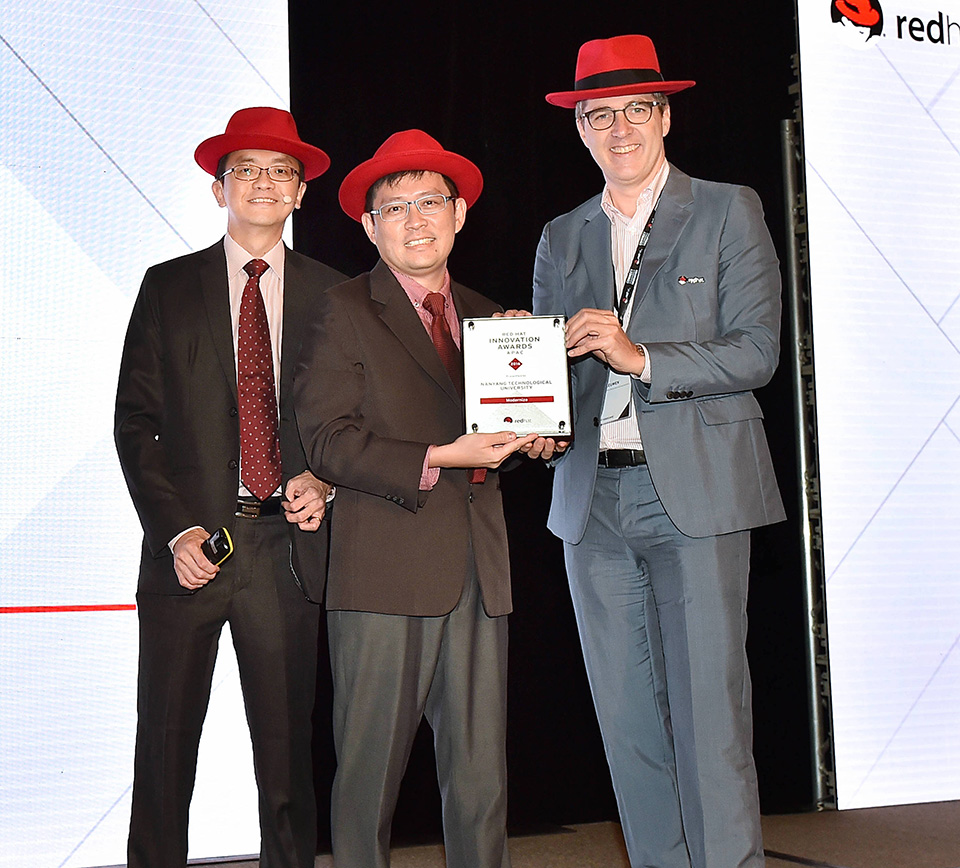 Melvin Soh, Senior Assistant Director for
NTU's High Performance Computing Centre
(middle), accepting the award on stage.
Melvin Soh, Senior Assistant Director for
NTU's High Performance Computing Centre
(middle), accepting the award on stage.
Taipei
Inventec Corporation

Inventec Corporation is a Taiwan Stock Exchange listed electronic manufacturing service company that provides services like engineering design and development to top brands in the world. They had to build a service flow system to better serve their customers and chose Red Hat Enterprise Virtualization to improve flexibility and achieve scalability. They are now able to provide efficient services to their customers and at the same time, increase revenue for the organization.
While other software vendors were
considered, Red Hat provided a highly
scalable, affordable, open source model that
was more effective to run a large-scale
cloud deployment project. Red Hat Enterprise
Virtualization also gives us a robust,
efficient, and safe solution at a low cost.
When combined with other Red Hat offerings,
it has helped us provide better services to
our
customers.
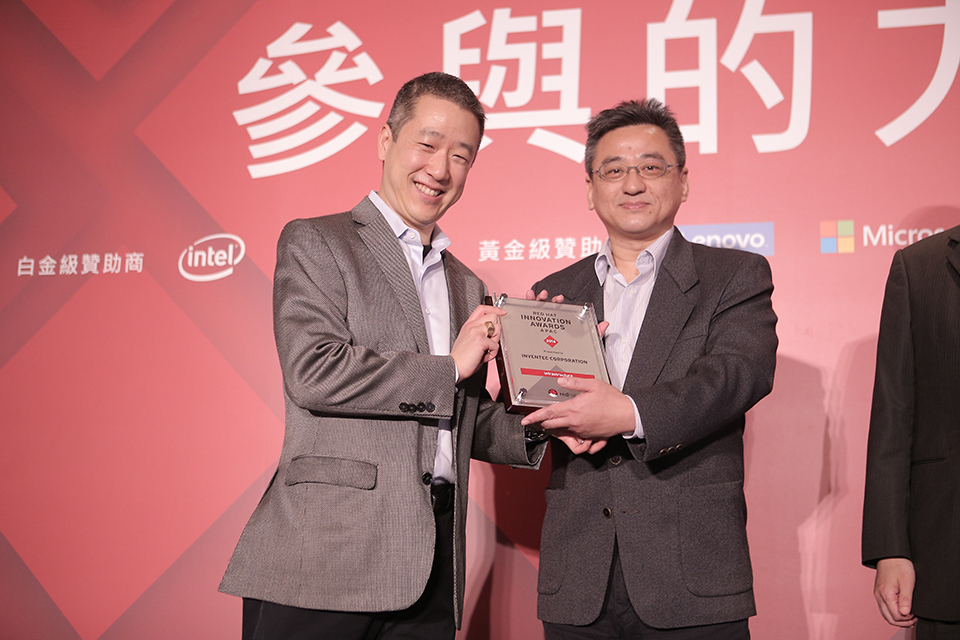 (From left) Bryan Che, General Manager, Cloud
Product Strategy, Red Hat, and John Tsung
Ph.D., Vice President, Cloud Service Center,
Cloud Information Services, Inventec
(From left) Bryan Che, General Manager, Cloud
Product Strategy, Red Hat, and John Tsung
Ph.D., Vice President, Cloud Service Center,
Cloud Information Services, Inventec
China Life Insurance Co. Ltd.
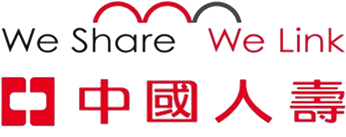
China Life Insurance was founded in 1963 and currently has seven customer service centers, seven life insurance business divisions, eight branch offices and 167 service points. It was challenging for the organization to standardize the existing environment, hence they chose Red Hat JBoss EAP to build the Customer Online Insurance System on. The Red Hat solutions implemented not only allows the company to enjoy great flexibility but also scalability and efficiency, thanks to standardization and automation.
 (From left) Bryan Che, General Manager, Cloud
Product Strategy, Red Hat, and Richard Sun,
Chief Information Officer, China Life
Insurance Co., Ltd.
(From left) Bryan Che, General Manager, Cloud
Product Strategy, Red Hat, and Richard Sun,
Chief Information Officer, China Life
Insurance Co., Ltd.





